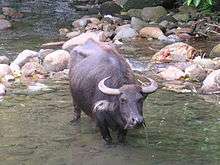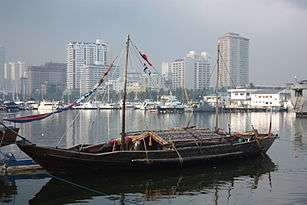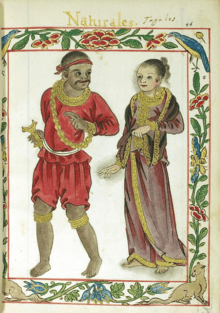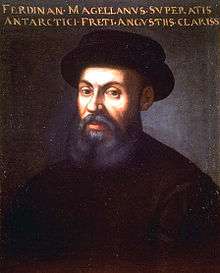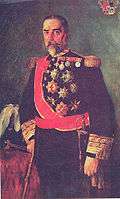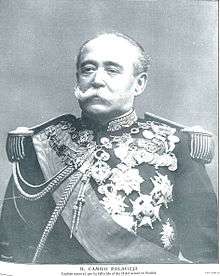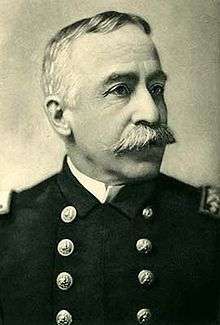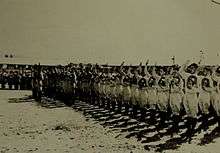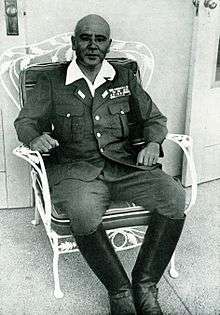Timeline of Philippine history
This is a timeline of Philippine history, comprising important legal and territorial changes and political events in the Philippines and their predecessor states. To read about the background to these events, see History of the Philippines. See also the list of Presidents of the Philippines.
Graphic timeline
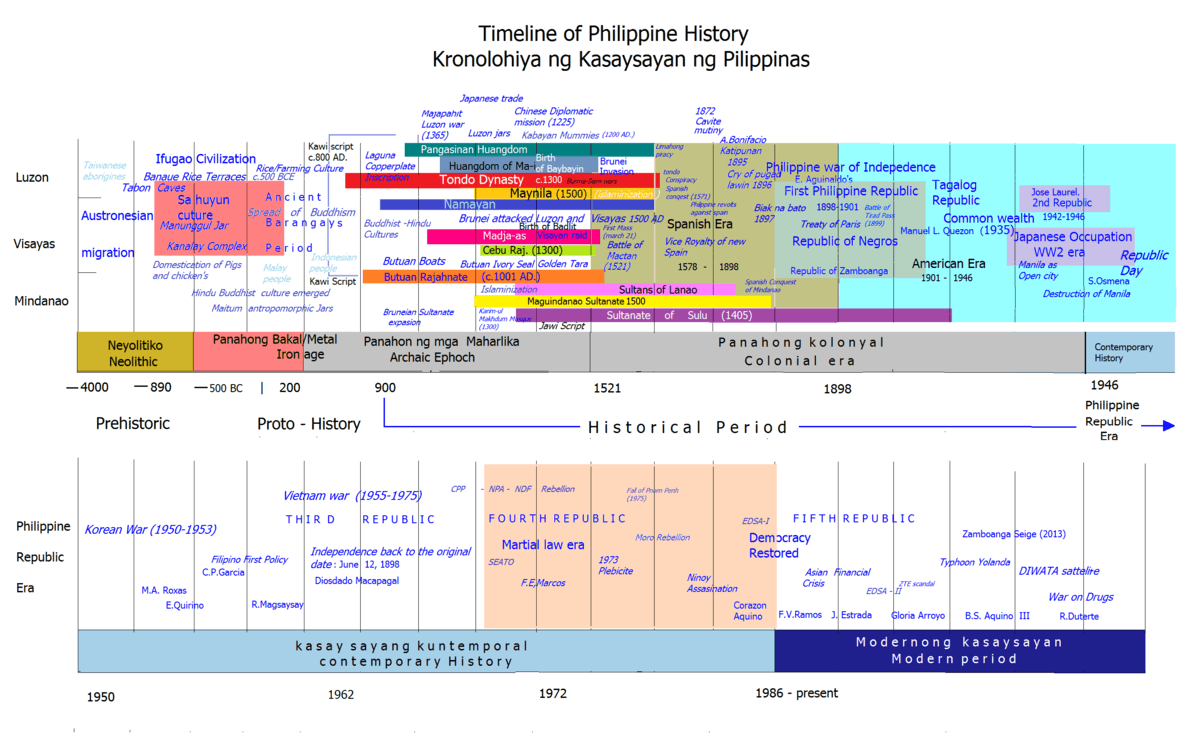
Pre-historic
| Year (BCE) | Date | Event | Source |
|---|---|---|---|
| 500,000 | The early humans in the Cagayan cave. | ||
| 400,000 | People belonging to the species Homo Erectus set foot on the Philippines. | ||
| 55,000 | The first Homo Sapiens in the Philippines. | ||
| 50,000 | Early humans made stone tools in the Tabon Cave in Palawan. | ||
| 8,000 | The ancestors in the other caves: Batangas, Bulacan and Rizal. | ||
| The other caves of Palawan: Guri and Duyong cave where the Homo Sapiens lived. | |||
| 40,000 | Negritos start to settle. | ||
| 35,000 | At the old Kapampangan region was ten times larger than the present borders shown on the map, years ago, a series of the ancient Mount Pinatubo eruptions dumped lava, ashes, tephra and lahar into the sea, forming the present landmass of the region. | ||
| 20,000 | Tabon Man made stone tools in the Tabon Cave. | ||
| 4,500–300 | Multiple Austronesian migrations from Taiwan. | [1][2] | |
| A jade culture is said to have existed as evidenced by tens of thousands of exquisitely crafted jade artifacts found at a site in Batangas province. | [1][2] | ||
| c.4000 | Earliest evidence of rice growing, domesticating chickens and pigs. | ||
| 3,000 | Presumed date of the Angono Petroglyphs. | ||
| c.2000 | The Igorots built forts made of stone walls that averaged several meters in width and about two to three times the width in height around | [3][4] |
-
The Tabon Cave Complex.
-
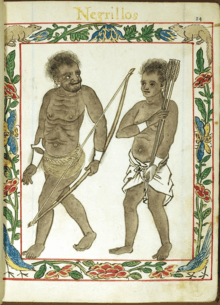
The Negritos.
-
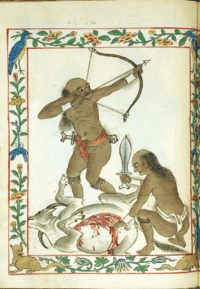
Animal hunting.
-
Domestication of Pigs.
-
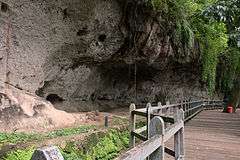
The Angono Petroglyphs.
11th centuries BCE
| Year (BCE) | Date | Event | Source |
|---|---|---|---|
| c.1000 BCE. | The Late Neolithic period in the Philippines, Evidence shows by a Yawning Jarlet on the Burial site in Leta-leta caves in Palawan by Robert Fox which had later become National treasure in the Philippines. |
-
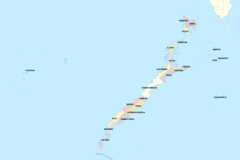
Palawan becomes the National treasure in the Philippines.
9th-10th centuries BCE
| Year (BCE) | Date | Event | Source |
|---|---|---|---|
| 901 BCE | The beginning of Iron Age finds in Philippines also point to the existence of trade between Tamil Nadu and the Philippine Islands during the ninth and tenth centuries B.C. |
-

Souttoukeny jewelry, 2nd century B.C. Tamil Nadu.
1st century BCE
| Year (BCE) | Date | Event | Source |
|---|---|---|---|
| 890-710 BCE | The Sa Huyun culture , Evidence can be found in Manunggul Jar which is a secondary burial jar excavated from a Neolithic burial site in Manunggul cave of Tabon Caves at Lipuun Point. The depiction of sea-waves on the lid places this Manunggul jar in the Sa Huỳnh culture pottery tradition. These are people that migrated in an East to West migration from the Borneo-Palawan area to Southern Vietnam. | ||
| 600 BCE | The people of Palawan, Cordillera an Batanes become an Ancient goldsmith’s, An Ancient goldsmith shop had discovered that made the 20-centuries-old lingling-o, or omega-shaped gold ornaments in Batanes. | ||
| c. 500 BCE | The end of a long clan wars between Ifugao and Kalinga people, The unification of the clans and tribes makes the entire society of Cordillera. | ||
| The Banaue Rice Terraces had been constructed by the Igorots in the mountains of Ifugao for planting rice. | |||
| c.400 BCE | larger villages came about- usually based near water, which made traveling and trading easier. The resulting ease of contact between communities meant that they began to share similar cultural traits, something which had not previously been possible when the communities consisted only of small kinship groups. | ||
| 300-200 | The start of the Carabao or Water buffaloes domestication and husbandry. | ||
| 100 BCE | Pomponius Mela, Marinos of and the Periplus of the Erythraean Sea mentioned this island in 100 BC, and it is basically the equivalent to the Indian Suvarnadvipa, the "Island of Gold." Josephus calls it in Latin Aurea, and equates the island with biblical Ophir, from where the ships of Tyre and Solomon brought back gold and other trade items. |
-
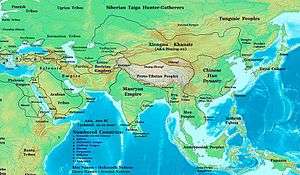
The Sa Huỳnh culture.
-
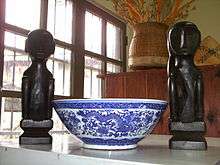
Bubuls (household deities), figures for Ancestor Worship.
-

The Manunggul Jar is a secondary burial jar excavated from a Neolithic burial site in Manunggul cave of Tabon Caves at Lipuun Point at Palawan dating from 890–710 B.C. The two prominent figures at the top handle of its cover represent the journey of the soul to the afterlife.
-
Example of cave painting in Tabon Caves what Maise believes to be a cave painting depicting Manjusri.
-
the panoramic view of Banaue Rice Terraces in Benguet.
1st century AD
| Year | Date | Event | Source |
|---|---|---|---|
| 21 AD | The Philippines is believed by some historians to be the island of Chryse, the "Golden One," which is the name given by ancient Greek writers in reference to an island rich in gold east of India. | ||
| Cebu had earlier encounter with the Greek traders in 21 AD. |
-
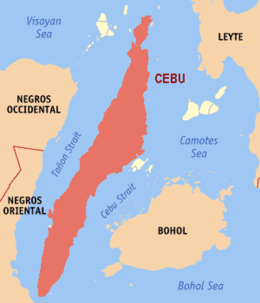
Cebu had earlier encounter with the Greek traders in 21 AD.
2nd -3rd Century
| Year | Date | Event | Source |
|---|---|---|---|
| 101 | Since at least the 3rd century, the indigenous peoples were in contact with other Southeast Asian and East Asian nations.Fragmented ethnic groups established numerous city-states formed by the assimilation of several small political units known as barangay each headed by a Datu or headman (still in use among non-Hispanic Filipino ethnic groups) and answerable to a king, titled Lakan and Rajah. | ||
| c.200 AD | The Maitum Jars are antropomorphic jars that were depicting a Child/ Human beings (head is the lead of the jar with ears and the body was the jar itself with hands and feet as the handle) with perforations in red and black colors, had been used as a secondary burial jars in Ayub cave, Pinol, Maitum Sarangani province, each of the jars had an "facial expressions" Another example of funeral pottery in the Philippines. | ||
| Marks the end of the Sa Huyun Culture, The People are merged in to Different Chiefdoms , Kingdoms and Thalassocracies , But the remnants of Sa Huyun has still practiced by the natives of Masbate the artifacts can be found in Kalanay Cave proof that the ancient Masbatenios still practiced the Sa Huyun culture until 1500 AD. | |||
| 220-263 AD. | The period of Three Kingdoms in China. The "Little, dark people" living in Anwei province in South China were driven South by Han people. Some settled in Thailand, others went farther south to Indonesia, Sumatra, Borneo. They were known as Aetas from whom Palawan's Batak tribe descended. |
-
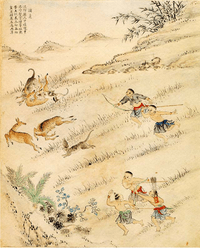
Deer hunting natives.
-
.jpg)
The Maitum Jars.
-
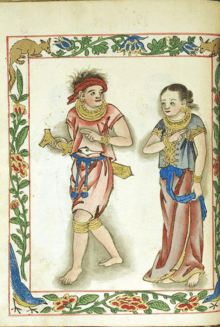
A Visayan royal couple.
-

A Kawal (warrior knight).
-

The Alipin (slaves).
-
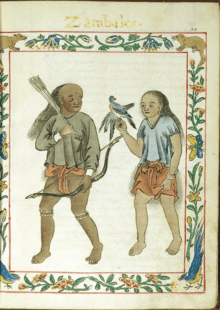
the Timawas (A free men) or a Middle class peoples.
4th century onwards
| Year | Date | Event | Source |
|---|---|---|---|
| 400 | The development of inter-island and international trade, became more culturally homogeneous. | ||
| The Thalassocracies Converted to Hinduism and Buddhism and adopted the Hindu-Buddhist culture and religion flourished among the noblemen in this era. |
-

The Greater India.
-

The spread of Hinduism.
7th century
| Year | Date | Event | Source |
|---|---|---|---|
| c.601 | The Chiefdoms of Zabag and Wak-Wak situated in present day Pampanga and Aparri specialized the trade with Japan and the Kingdom of Ryukyu in Okinawa and Hyrum tambok. | ||
| Numerous prosperous centers of trade had emerged, including the Tondo, Kingdom of Namayan which flourished alongside Manila Bay, Cebu, Iloilo, Butuan, the Kingdom of Sanfotsi situated in Pangasinan. |
-

Flag of the Ryukyu Kingdom.
-
Manila Bay
8th century
| Year | Date | Event | Source |
|---|---|---|---|
| 700 | The Birth of Kawi script, this Abugida are become widely used in the Maritime Southeast Asia, the word Kawi or Kawikaan means "Poetry" in Sanskrit. |
-

the Kawi script.
10th century
| Year | Date | Event | Source |
|---|---|---|---|
| 900 | April 21 | End of prehistory. Laguna Copperplate Inscription, the earliest known Philippine document, is written in the Manila area in Kawi script. Rise of Indianized Kingdom of Tondo around Manila Bay. Hinduism spread across the archipelago. | |
| 1000 | Buddhism and Hinduism along with the Animism become the religion of the most of Philippine archipelago by the influence of its neighbors. | ||
| c.1025 AD | Around the feet of Mt.Kamhatik near Mulanay town in Quezon Province once stood a 280-hectaire ancient village where the archeologists found a 1000 year-old limestone coffins on a jungle-covered mountain top from 2011-2012 proof of the advance burial rituals of the early Filipinos. | [5][6] |
-

The world in 900 AD and the location of Tondo
-

Expansion of Buddhism, originated from India in VI century BCE to the rest of Asia until present.
-

The Laguna Copperplate Inscription (LCI).
11th century
| Year | Date | Event | Source |
|---|---|---|---|
| 1000 | People from Central Vietnam called Orang Dampuan establish trade zones in Sulu | ||
| 1001 | March 17 | Song Shih document records tributary delegation from the Indic Rajahnate of Butuan. | |
| 1003 | The construction of Idjangs in Batanes Islands (mountain fortress-cities) built by Ivantans. |
-

The Orang Dampuan in Central Vietnam.
-
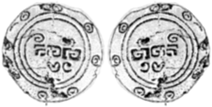
The Butuan Ivory Seal.
12th century
| Year | Date | Event | Source |
|---|---|---|---|
| 1007 | The Malay immigrants arrived In Palawan, most of their settlements were ruled by Malay chieftains. | ||
| 1150 | Gat Timamanukum become the Lakan of the Tondo Dynasty. | ||
| c.1155 | At the time, the trade in large native Ruson-tsukuri (literally Luzon made in Japanese: 呂宋製 or 呂宋つくり) clay jars used for storing green tea and rice wine with Japan flourished in the 12th century, and local Tagalog, Kapampangan and Pangasinense potters had marked each jar with Baybayin letters denoting the particular urn used and the kiln the jars were manufactured in. | ||
| 1174-1175 | The Visayan Conferderation of Madyas conducted a series of raids on Formosa (Modern day Taiwan), which was part of Song Dynasty China. | ||
| 1175 | Namayan reaches its peak. | ||
| c. 1180 | Before the establishment of the Sultanate of Sulu, The Indianized chiefdom of Lupah Sug (which is the present day Jolo, Sulu) was flourishing. Dwelling of the Buranun peoples under the rule of Rajah Sipad the Older. |
-
The Ruson-tsukuri (literally Luzon made in Japanese:呂宋製 or 呂宋つくり) clay jars used for storing green tea and rice wine.
-

The Pintados.
-
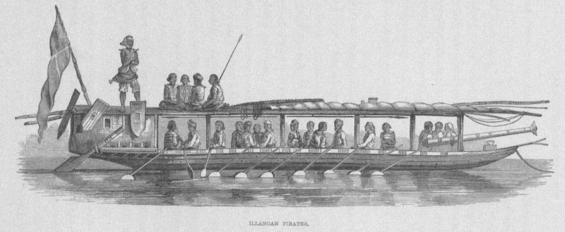
An ancient battleship called Karakowa, similar to the Balangay.
-
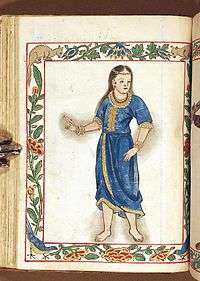
Dayang is a royal title held for Princess or Queen.
-
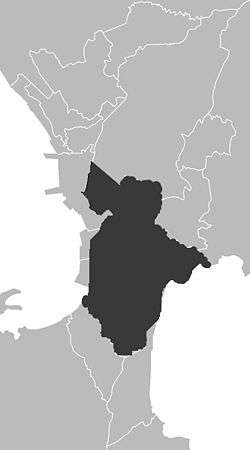
The territorial extent of Namayan and its capital Sapa (Now called Sta.Ana, Manila).
13th century
| Year | Date | Event | Source |
|---|---|---|---|
| 1200 | The Indonesians of the Majapahit in the 13th century went to Palawan, they brought with them Buddhism and preached to the natives, natives converted their faith from Animism and become Buddhists. | ||
| The process of Kabayan mummification had began in Ibaloi Benguet which is also called Fire mummies. | |||
| 1221 | Tondo expands its territories north towards Kapampangan kingdom, in the leadership of Rajah Alon. | ||
| 1221 | Tondo expands its territories southward towards Kumindang (which is the present location of Batangas province), in the leadership of Rajah Alon. | ||
| 1223 | Tondo expands its territories southward towards Bicolandia in the leadership of Rajah Alon. | ||
| 1240 | Tuan Masha'ika, an Arab, travels and introduces Islam to Sulu. | ||
| 1225 | The Tondo conquered the most of Southern Luzon. | ||
| The Buddhist Huangdom of Ma-i was flourishing in the island of Mindoro, became a Tributary state to Song Dynasty in the leadership of Gat Sa Lihan as their Huang (king). Zhao Rugua, a superintendent of maritime trade in Fukien province wrote the book entitled Zhu Fan Zhi ("Account of the Various Barbarians") in which he described trade with a country called Ma-i in the island of Mindoro in Luzon,(pronounced "Ma-yi") which was a prehispanic Philippine state. | |||
-
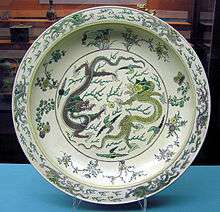
Chinese porcelain-ware, Kangxi era (1662–1722), Qing Dynasty. Ancient Chinese porcelain excavated in Mindoro, Philippines; proves the existence of trade between the island and Imperial China. This consequently validates Chinese historical records of the area.
-
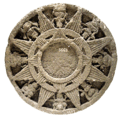
The Surya Majapahit
-

The Watawat of the Tondo Dynasty.
-
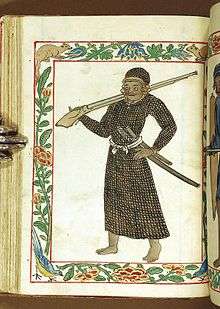
A native warrior from Luzon.
-

Two Lantaka guns.
14th century
| Year | Date | Event | Source |
|---|---|---|---|
| 1300 | The Rajahnate of Cebu was founded after the rebellion of Sri Lumay against the Maharajah of Chola Dynasty had succeeded. | ||
| c.1305 | The Residents of Mandaluyong have always been known for their industry. Men did the laundry to the amusement of non-residents until shortly after the war, while the women ironed the clothes. | ||
| 1365 | Kingdom of Tondo defeated Majapahit in the Battle of Manila. | ||
| 1369 | The Sulus attacked Majapahit and its province Po-ni (Brunei), looting it of treasure and gold. A fleet from Majapahit succeeded in driving away the Sulus, but Po-ni was left weaker after the attack. | ||
| 1380 | Sheikh Karim-ul Makhdum arrives in Jolo and builds a Mosque. | ||
| 1390 | Baguinda Ali arrives in Buansa, Sulu and the people named him Rajah. | ||
| 1400 | Birth of the Baybayin, Hanunoo, Tagbanwa, and Buhid scripts from Brahmi. | ||
| 1411 | Paduka Pahala reigned as the King of Lupah Sug in Sulu. He and his family and 300 other people of noble descent sailed to China, he was to pay tribute to the Yongle Chinese emperor, Zhu Di, who was of the Ming Dynasty. While he was welcomed by the emperor upon his arrival in China, he nevertheless contracted a mysterious disease on his way home and died at Dezhou, a town in Shandong province in China. |
-

The Baybayin.
-
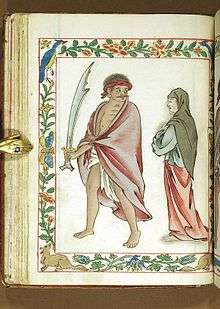
The Visayan Timagua, a warrior caste.
-
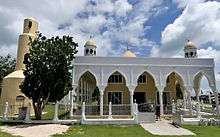
The Sheikh Karim-ul Makhdum Mosque is located in Tubig Indangan, Simunul, Tawi-Tawi,It is the oldest mosque in the Philippines, Built in 1380.
-

The Yongle Emperor.
15th century
| Year | Date | Event | Source |
|---|---|---|---|
| 1405 | The Yongle Emperor instituted a Chinese envoy on Luzon during Zheng He's voyages and appointed Ko Ch'a-lao to that position in 1405. China also had vassals among the leaders in the archipelago. China attained ascendancy in trade with the area in Yongle's reign. | ||
| 1411 | December 11 | The Yongle Emperor holds a banquet in honor of Pangasinan and its Huang Liyu. | |
| 1457 | Sultanate of Sulu founded by Sayyid Abubakar Abirin. | [7] | |
| 1458-1459 | October 1547 – February 1549 | The Lucoes, or warriors from Luzon send soldiers to the Burmese Siamese wars and faced the White elephants of the Royal Burmese Army, at the same time also aiding the Burmese King for the conquest of the Siamese capital, Ayuthaya. | |
| 1470 | Namayan Become the Vassal state of the Tondo Dynasty and instated Lakan Takhan as sovereign. The vast Kingdom comprised what are now Quiapo, San Miguel, Sta, Mesa, Paco, Pandacan, Malate, Sta. Ana in Manila, and Mandaluyong, San Juan, Makati, Pasay, Pateros, Taguig, Parañaque , and portions of Pasig and Quezon City up to Diliman that were then part of Mandaluyong. |
-
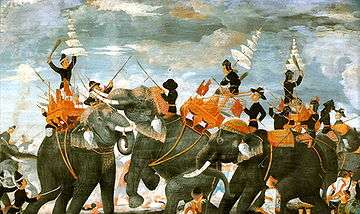
The Burmese Siamese wars: Painting by Prince Narisara Nuvadtivongs, depicting Queen Suriyothai (center) on her elephant putting herself between King Maha Chakkraphat (right) and the Viceroy of Prome (left).
-

Flag of the Sultanate of Sulu.
16th century
| Year | Date | Event | Source |
|---|---|---|---|
| 1500 | In the Battle of Manila the Tondo Dynasty defeated by Bruneian Empire. And the Rise of Kingdom of Maynila the puppet state under the Bolkiah dynasty had installed its puppet ruler under Rajah Sulayman. | ||
| The eruption of Mount Pinatubo in recorded history, The Buag Eruptive Period, Its eruptions were roughly the same size as those of 1991. | |||
| Sultan Bolkiah of Bruniean Empire Allies which is Maynla, Sultanate of Sulu and Maguindanao had failed to attack the Panay Island and wage a war against the Madyas Confederation. | |||
| 1521 | March 16 | Ferdinand Magellan lands on Homonhon with three small ships, named the Concepcion, Trinidad and Victoria. Magellan calls the place the Archipelago de San Lazaro since March 16 is the feast day of Saint Lazarus | [8][9] |
| March 28 | Magellan reaches the Philippines | [8][9] | |
| March 29 | Blood Compact between Magellan and Rajah Kulambo of Limasawa | [8][9] | |
| March 31 | The first mass on Philippine soil is celebrated. | [9][10] | |
| April 7 | Magellan meets Rajah Humabon of Cebu and enters into another Blood Compact. Humabon and his wife are baptized into the Catholic Church. | [8][9] | |
| April 27 | Magellan is killed by Lapu-Lapu in the battle of Mactan. | [8][9] | |
| 1525 | Spain sends an expedition under Juan Garcia Jofre de Loaysa to the Philippines. The Loaysa Expedition failed | [9] | |
| 1526 | Spain sends another expedition under Juan Cabot to the Philippines. The Cabot Expedition also failed | [9] | |
| 1527 | Spain sends a fourth expedition under Alvaro de Saavedra to the Philippines. | [9] | |
| 1529 | Saavedra's expedition returns to Spain without Saavedra who died on the way home. | [9] | |
| 1536 | The Loaysa expedition returns to Spain. One of its survivors is Andres de Urdaneta, its chronicler. | [9] | |
| 1543 | Spain sends a fifth expedition under Ruy López de Villalobos to the Philippines. The Expedition succeeds. | [9] | |
| February 2 | Villalobos arrives in the Philippines and names the islands of Samar and Leyte as Las Islas Filipinas in honor of the crown prince of Spain, Philip of Asturias | [9] | |
| 1565 | February 13 | Miguel López de Legazpi arrives in the Philippines with four ships and 380 men | [9][11] |
| May 8 | Legazpi established the first permanent Spanish settlement in the country | [9][11] | |
| Philippines was governed as a territory of the Viceroyalty of New Spain. | |||
| 1567 | Dagami Revolt (1567) | [12][13][14][15][16] | |
| 1568 | The Portuguese, under the command of General Gonzalo de Pereira, attack Cebu and blockade its port. | ||
| 1570 | The Portuguese again attack the colony and are repulsed. | ||
| May | Legazpi sends an expedition under the leadership of Martin de Goiti to Manila. | [11] | |
| 1571 | May 19 | The ruler of Manila, Rajah Suliman, wages war against the Spaniards | |
| June 24 | Legazpi establishes the Spanish Colonial Government in Manila and proclaims it the capital of the colony | [11] | |
| 1572 | August 20 | Legazpi dies and Guido de Lavezaris succeeds him as Governor-General (1572–1575) | [11][17] |
| 1574 | November 23 | The Chinese pirate captain Limahong attacks Manila but fails | |
| December 2 | Limahong again attacks Manila with 1500 soldiers but again fails to defeat the Spaniards | ||
| December | Lakandula leads a short revolt against the Spanish. | [12][13][14][15][16] | |
| 1575 | Ciudad de Nueva Cáceres(later renamed as Naga City) established by Captain Pedro de Sanchez | ||
| August 25 | Francisco de Sande appointed Governor-General (1575–1580) | [17] | |
| 1579 | Diocese of Manila established | [18][19] | |
| 1580 | April | Gonzalo Ronquillo de Peñaloza appointed Governor-General (1580–1583) | [17] |
| King Philip II of Spain becomes King of Portugal, ending the Portuguese harassment of the Philippines | |||
| The Spaniards institute forced labor on all male natives aged 16 to 60. | |||
| 1582 | Battles take place between Spanish forces and Japanese Ronin | ||
| 1583 | March 10 | Diego Ronquillo appointed Governor-General (1583–1584) | [17] |
| August | A great fire destroys Manila | ||
| 1584 | May 16 | Santiago de Vera appointed Governor-General (1584–1590) | [17] |
| 1585 | Pampangos Revolt (1585) | [12][13][14][15][16] | |
| 1586 | The construction of San Agustin Church in Intramuros. | ||
| 1587 | Conspiracy of the Maharlikas (1587–1588) | [12][13][14][15][16] | |
| 1589 | Revolts Against the Tribute (1589) | [12][13][14][15][16] | |
| 1590 | Missionaries from the Society of Jesus established the Colegio de Manila in Intramuros. | [3][20][21] | |
| June 1 | Gómez Pérez Dasmariñas appointed Governor-General (1590–1593) | [17] | |
| 1592 | Miguel de Benavides's Doctrina Christiana in Chinese published | ||
| 1593 | Doctrina Christiana in Spanish and Tagalog published | ||
| October | Pedro de Rojas appointed Governor-General (1593) | [17] | |
| December 3 | Luis Pérez Dasmariñas appointed Governor-General (1593–1596) | [17] | |
| 1595 | Diocese of Manila raised to an Archbishopric | [18][19] | |
| Diocese of Nueva Segovia established. | [18][19] | ||
| Diocese of Caceres established. | [18][19] | ||
| Diocese of Cebu established. | [18][19] | ||
| Colegio de San Ildefonso founded in Cebu | |||
| 1596 | Magalat Revolt (1596) | [12][13][14][15][16] | |
| July 14 | Francisco de Tello de Guzmán appointed Governor-General (1596–1602) | [17] | |
| 1598 | Colegio de Santa Potenciana, the first school for girls in the Philippines, established | [20][22][23][24] | |
| 1600 | Pedro Bucaneg inscribes the oral epic Biag ni Lam-ang |
-
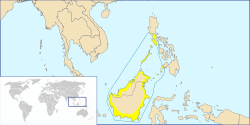
Territorial extent of the Bruneian Empire.
-

Lapu-Lapu, the King of Mactan island in Cebu.
-
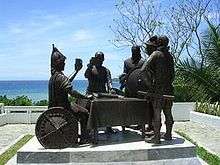
The Blood Compact between Datu Sikatuna and Spaniards fleet.
-
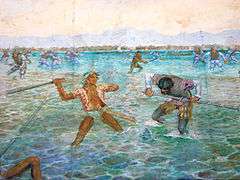
The Battle of Mactan.
-
The San Agustin Church, the oldest catholic church in the Philippines.
-
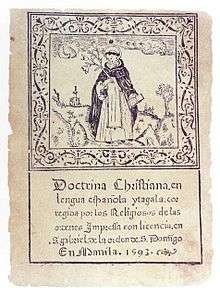
The Doctrina Christiana was an early book of Roman Catholic Catechism, written in 1593 by Fray Juan de Plasencia, and is believed to be one of the earliest printed books in the Philippines.
-
Pedro Bucaneg written the epic poem of Biag ni Lam-ang.
17th century
-
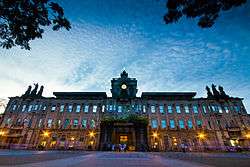
The UST, The oldest university in Asia.
-
The Manila-Acapulco Galleon Memorial at Plaza Mexico in Intramuros, Manila.
-
The Paoay Church in Ilocos Norte.
18th century
| Year | Date | Event | Source |
|---|---|---|---|
| 1701 | December 8 | Domingo Zabálburu de Echevarri appointed Governor-General (1701–1709). | [17] |
| 1709 | August 25 | Martín de Urzua y Arismendi appointed Governor-General (1709–1715). | [17] |
| 1715 | February 4 | Jose Torralba appointed Governor-General (1715–1717) by the Audiencia Real. | [17] |
| 1717 | August 9 | Fernando Manuel de Bustillo Bustamante y Rueda appointed Governor-General (1717–1719). | [17] |
| 1718 | Rivera Revolt (1718) | [12][13][14][15][16] | |
| 1719 | October 11 | Archbishop Francisco de la Cuesta of Manila becomes acting Governor-General (1719–1721). | [17] |
| Caragay Revolt (1719) | [12][13][14][15][16] | ||
| 1721 | August 6 | Toribio José Cosio y Campo appointed Governor-General (1721–1729). | [17] |
| 1722 | Colegio de San Jose conferred with the title Royal. | ||
| 1729 | August 14 | Fernándo Valdés y Tamon appointed Governor-General (1729–1739). | [17] |
| 1739 | July | Gaspar de la Torre appointed Governor-General (1739–1745). | [17] |
| 1744 | Dagohoy Rebellion (1744–1829) | ||
| 1745 | September 21 | Archbishop Juan Arrechederra of Manila becomes acting Governor-General (1745–1750). | [17] |
| Agrarian Revolt (1745–1746) | [12][13][14][15][16] | ||
| 1750 | July 20 | Jose Francisco de Obando y Solis appointed Governor-General (1750–1754). | [17] |
| 1754 | May 15 | Mt Taal emits magma and destroys the towns of Lipa, Sala, Tanauan and Talisay. | |
| July 26 | Pedro Manuel de Arandia Santisteban appointed Governor-General (1754–1759). | [17] | |
| 1759 | June | Miguel Lino de Ezpeleta appointed Governor-General (1759–1761). | [17] |
| 1761 | July | Archbishop Manuel Rojo del Rio y Vieyra of Manila appointed Governor-General (1761–1762). | [17] |
| 1762 | Silang Revolt (1762–63) | ||
| Palaris Revolt (1762–1765) | |||
| Camarines Revolt (1762–1764) | |||
| Cebu Revolt (1762–1764) | |||
| British forces looted and plundered many of Manila establishments through the so-called Rape of Manila. | |||
| September 22 | British fleet entered seizes Manila Bay as part of the Seven Years' War | ||
| October 5 | Manila fell under the British rule; start of the British occupation. | ||
| October 6 | Simón de Anda y Salazar appointed Governor-General (1762-17614) by the Real Audiencia. Provisional Government established in Bacolor, Pampanga with de Anda as dictator. | [17] | |
| November 2 | The British East India Company commissioned The Rt Hon. Dawsonne Drake became the first British governor-general of the Philippines until 1764. | [17] | |
| 1763 | Dabo and Marayac Revolt (1763) | ||
| Isabela Revolt (1763). | |||
| February 10 | Treaty of Paris implicitly returns Manila to Spain. | ||
| May 28 | Deaths of Gabriela Silang, the only Filipina to have led a revolt, and her husband Diego. | ||
| 1764 | March 17 | de Anda hands over the control of the colonial government to Francisco Javier de la Torre, newly appointed Governor-General (1764–1765) | [17] |
| June 11 | The last of the British ships that sailed to Manila leaves the Philippines for India, ending the British occupation. | ||
| 1765 | February 10 | Royal Fiscal of Manila Don Francisco Léandro de Viana writes the famous letter to King Charles III of Spain, later called as "Viana Memorial of 1765". The document advised the king to abandon the colony due to the economic and social devastation created by the Seven Years' War. The suggestion was not heeded. | |
| July 6 | José Antonio Raón y Gutiérrez appointed Governor-General (1765–1770) | [17] | |
| Governor Raon orders the minting of parallelogramic-shaped coins called barrillas, the first coined minted in the Philippines. | [17] | ||
| 1769 | July 23 | The Society of Jesus in the Philippines is expelled by Raón after receiving a dated later from Charles III's chief minister Don Pedro Pablo Abarca de Bolea on March 1, 1767. The Jesuit's Properties are confiscated by the Spanish Colonial Government | |
| 1770 | July | Simón de Anda y Salazar appointed Governor-General (1770–1776) | [17] |
| 1771 | Moro pirates traveled all over the country and raids many fishing villages in Manila Bay, Mariveles, Parañaque, Pasay and Malate. | ||
| 1774 | November 9 | Parishes secularized by order of King Charles III of Spain. | |
| 1776 | October 30 | Pedro de Sarrio appointed Governor-General (1776–1778) | [17] |
| 1778 | July | José Basco y Vargas appointed Governor-General (1778–1787) | [17] |
| 1780 | Real Sociedad Economica de los Amigos del Pais de Filipinas (Royal Economic Society of Friends of the Philippines) introduced in the Philippines to offer local and foreign scholarships and professorships to Filipinos, and financed trips of scientists from Spain to the Philippines | ||
| 1783 | Bishop Mateo Joaquin de Arevalo of Cebu establishes the Colegio-Seminario de San Carlos(later renamed as the University of San Carlos) from the old building of the defunct Colegio de San Ildefonso, which was closed down in 1769 after the suppression of the Jesuits. | ||
| 1785 | Lagutao Revolt (1785). | ||
| May 20 | University of Santo Tomas granted Royal Title by King Charles III of Spain. | [28][29] | |
| 1787 | September 22 | Pedro de Sarrio appointed Governor-General (1787–1788) | [17] |
| 1788 | Ilocos Norte Revolt (1788). | ||
| April 2 | Birth of the greatest Tagalog poet from Bulacan Francisco "Balagtas" Baltazar. | ||
| July 1 | Félix Berenguer de Marquina appointed Governor-General (1788–1793) | [17] | |
| 1793 | September 1 | Rafael María de Aguilar y Ponce de León appointed Governor-General (1793–1806) | [17] |
-

Francisco Baltazar, A Poet and the author of the novel Florante at Laura.
-
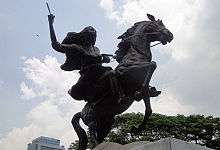
Gabriela Silang a Filipino revolutionary leader best known as the first female leader of a Filipino movement for independence from Spain.
-

the IHS logo Society of Jesus .
19th century
| Year | Date | Event | Source |
|---|---|---|---|
| 1805 | Nueva Vizcaya Revolt (1805) | ||
| 1806 | August 7 | Mariano Fernández de Folgueras appointed Governor-General (1806–1810) | [17] |
| 1807 | Ambaristo Revolt (1807) | ||
| 1808 | May | French Emperor Napoleon Bonaparte installs his brother Joseph Bonaparte as King of Spain. | |
| 1809 | January 22 | King Joseph Bonaparte gives Filipinos Spanish Citizenship and grants the colony representation in the Spanish Cortes | |
| 1810 | March 4 | Manuel Gonzalez de Aguilar appointed Governor-General (1806–1813) | [17] |
| 1812 | March 19 | The Spanish Cortes promulgates the Cadiz Constitution | |
| September 24 | The first Philippine delegates to the Spanish Cortes, Pedro Perez de Tagle and Jose Manuel Coretto take their oath of office in Madrid, Spain. | ||
| 1813 | March 17 | The Cadiz Constitution implemented in Manila. | |
| September 4 | José Gardoqui Jaraveitia appointed Governor-General (1806–1816) | [17] | |
| October 16 | Napoleon is defeated in the Battle of the Nations near Leipzig | ||
| October | British General Duke of Wellington drives the Napoleonic forces out of Spain | ||
| 1814 | Ferdinand VII proclaimed as King of Spain; Conservatives return to the Spanish Cortes | ||
| 1815 | June 18 | Napoleon is defeated in Waterloo | |
| October 15 | Napoleon is exiled in St. Helena's Island | ||
| 1816 | Cadiz Constitution is rejected by the conservative government and Filipino representation in the Spanish Cortes is abolished | ||
| December 10 | Mariano Fernández de Folgueras appointed Governor-General (1816–1822) | [17] | |
| 1822 | October 30 | Juan Antonio Martinez appointed Governor-General (1822–1825) | [17] |
| 1825 | October 14 | Mariano Ricafort Palacín y Abarca appointed Governor-General (1825–1830) | [17] |
| 1828 | Earthquake strikes Manila destroying many of its buildings | ||
| 1830 | December 23 | Pascual Enrile y Alcedo appointed Governor-General (1830–1835) | [17] |
| Manila is opened to the world market | |||
| 1835 | March 1 | Gabriel de Torres appointed Governor-General (1835) | [17] |
| April 23 | Joaquín de Crámer appointed Governor-General (1835) | [17] | |
| September 9 | Pedro Antonio Salazar Castillo y Varona appointed Governor-General (1835) | [17] | |
| Chamber of Commerce is formed | |||
| 1837 | August 27 | Andrés García Camba appointed Governor-General (1837–1838) | [17] |
| Manila is made an open port. | |||
| 1838 | December 29 | Luis Lardizábal appointed Governor-General (1838–1841) | [17] |
| Florante at Laura is published. | |||
| 1841 | February 14 | Marcelino de Oraá Lecumberri appointed Governor-General (1841–1843) | [17] |
| November 4 | Apolinario Dela Cruz better known as Hermano Pule was executed. | ||
| 1843 | June 17 | Francisco de Paula Alcalá de la Torre appointed Governor-General (1843–1844) | [17] |
| 1844 | July 16 | Narciso Clavería y Zaldúa appointed Governor-General (1844–1849) | [17] |
| 1849 | December 26 | Antonio María Blanco appointed Governor-General (1849–1850) | [17] |
| 1850 | July 29 | Antonio de Urbistondo y Eguía appointed Governor-General (1850–1853) | [17] |
| 1852 | December 4 | Glowing avalanche from Mt Hibok-Hibok. | |
| 1853 | December 20 | Ramón Montero y Blandino appointed Governor-General (1853–1854) | [17] |
| 1854 | February 2 | Manuel Pavía y Lacy appointed Governor-General (1854) | [17] |
| October 28 | Ramón Montero y Blandino appointed Governor-General (1854) | [17] | |
| November 20 | Manuel Crespo y Cebrían appointed Governor-General (1854) | [17] | |
| 1856 | December 5 | Ramón Montero y Blandino appointed Governor-General (1856–1857) | [17] |
| 1857 | January 12 | Fernándo Norzagaray y Escudero appointed Governor-General (1857–1860) | [17] |
| 1859 | Jesuits return to the Philippines | ||
| Jesuits takes over the Escuela Municipal and establishes the Ateneo Municipal | |||
| 1860 | January 12 | Ramón María Solano y Llanderal appointed Governor-General (1860) | [17] |
| August 29 | Juan Herrera Davila appointed Governor-General (1860–1861) | [17] | |
| 1861 | February 2 | José Lemery e Ibarrola Ney y González appointed Governor-General (1861–1862) | [17] |
| June 19 | Jose Rizal, Philippines' National Hero is born. | ||
| Escuela de Artes Y Oficios de Bacolor established as Asia's oldest vocational school. | |||
| 1862 | July 7 | Salvador Valdés appointed Governor-General (1862) | [17] |
| July 9 | Rafaél de Echagüe y Bermingham appointed Governor-General (1862–1865) | [17] | |
| 1863 | June 3 | An earthquake leaves Manila in ruins | |
| November 30 | Andres Bonifacio, founder of the Katipunan, was born. | ||
| 1864 | July 23 | Apolinario Mabini, the Brains of the Revolution, was born. | |
| 1865 | University of Santo Tomas made the center for public instruction throughout the Philippines by royal decree of Queen Isabella II of Spain. | [28][29] | |
| Observatorio Meteorológico del Ateneo Municipal de Manila (Manila Observatory) established by the Jesuits | |||
| March 24 | Joaquín del Solar e Ibáñez appointed Governor-General (1862–1865) | [17] | |
| April 25 | Juan de Lara e Irigoyen appointed Governor-General (1862–1865) | [17] | |
| 1866 | July 13 | José Laureano de Sanz y Posse appointed Governor-General (1866) | [17] |
| September 21 | Juan Antonio Osorio appointed Governor-General (1866) | [17] | |
| September 27 | Joaquín del Solar e Ibáñez appointed Governor-General (1866) | [17] | |
| October 26 | José de la Gándara y Navarro appointed Governor-General (1866–1869) | [17] | |
| 1867 | Colegio de Santa Isabel established in Naga by Bishop Francisco Gainza, OP of Nueva Caceres, through the royal decree of Queen Isabella II of Spain. | ||
| 1869 | November 17 | Suez Canal opened | |
| Colegio de Santa Isabel inaugurated as the first Normal School in Southeast Asia | |||
| June 7 | Joaquín del Solar e Ibáñez appointed Governor-General (1866) | [17] | |
| June 23 | José de la Gándara y Navarro appointed Governor-General (1869–1871) | [17] | |
| 1871 | The Gabinete de Fisica of the University of Santo Tomas established as the first Museum in the Philippines. | [28][29] | |
| The Faculty of Medicine and Pharmacy of the University of Santo Tomas is established as the first school of Medicine and Pharmacy in the Philippines. | [28][29] | ||
| April 4 | Rafael de Izquierdo y Gutíerrez appointed Governor-General (1871–1873) | [17] | |
| 1872 | January 20 | 200 Filipino soldiers stage a mutiny in Cavite. | |
| February 17 | Priests Mariano Gomez, José Apolonio Burgos, and Jacinto Zamora (together known as Gomburza) are implicated in the Cavite Mutiny and executed. | ||
| 1873 | January 8 | Manuel MacCrohon appointed Governor-General (1873) | [17] |
| January 24 | Juan Alaminos y Vivar appointed Governor-General (1873–1874) | [17] | |
| 1874 | March 17 | Manuel Blanco Valderrama appointed acting Governor-General (1874) | [17] |
| June 18 | José Malcampo y Monje appointed Governor-General (1874–1877) | [17] | |
| 1875 | The Colegio de San Jose incorporated into the Faculty of Medicine and Pharmacy of the University of Santo Tomas. | [28][29][36][37] | |
| 1877 | February 28 | Domingo Moriones y Murillo appointed Governor-General (1877–1880) | [17] |
| 1880 | March 20 | Rafael Rodríguez Arias appointed Governor-General (1880) | [17] |
| April 15 | Fernando Primo de Rivera, 1st Marquis of Estella appointed Governor-General (1880–1883)(1st Term) | [17] | |
| Manila is connected through telegraphic cable with Europe by Eastern Telecom. | |||
| July 18 | Two shocks of an earthquake create destruction from Manila to Santa Cruz, Luguna. Tremors continue until Aug 6 | ||
| 1882 | March 3 | Jose Rizal leaves for Spain to continue his medical studies | |
| June 2 | Jose Rizal begins writing the Noli Me Tangere | ||
| 1883 | March 10 | Emilio Molíns becomes acting Governor-General (1883). (First Term) | [17] |
| April 7 | Joaquín Jovellar appointed Governor-General (1883–1885) | [17] | |
| 1884 | Required forced labor of 40 days a year is reduced to 15 days by the Spanish Colonial Government. | ||
| June 21 | Rizal finishes his medical studies in Spain | ||
| 1885 | April 1 | Emilio Molíns becomes acting Governor-General (1885). (First Term) | [17] |
| April 4 | Emilio Terrero y Perinat appointed Governor-General (1885–1888) | [17] | |
| 1887 | May 29 | Noli Me Tangere published. | |
| October | Rizal starts writing the El Filibusterismo | ||
| The Manila School of Agriculture is established. | |||
| 1888 | March 10 | Antonio Molto becomes acting Governor-General (1888) | [17] |
| Federico Lobaton became acting Governor-General (1888) | [17] | ||
| Valeriano Wéyler appointed Governor-General (1888–1891) | [17] | ||
| December 10 | La Solidaridad established | ||
| 1891 | March 28 | Rizal finishes writing El Filibusterismo in Biarritz, France | |
| El Filibusterismo published in Ghent, Belgium | |||
| Eulogio Despujol appointed Governor-General (1891–1893) | [17] | ||
| 1892 | June 26 | Rizal arrives in the Philippines from Europe via Hong Kong | |
| July 3 | Rizal forms the La Liga Filipina | ||
| July 7 | Rizal is arrested for establishing the La Liga Filipina | ||
| Andres Bonifacio secretly established the Katipunan. | |||
| Rizal is exiled to Dapitan | |||
| September 23 | Filipino painter Juan Luna shot dead his wife Paz Pardo De Tavera. | ||
| 1893 | March 10 | Federico Ochando becomes acting Governor-General (1893) | [17] |
| Ramón Blanco appointed Governor-General (1893–1896) | [17] | ||
| 1894 | July 8 | Bonifacio forms the Katipunan | |
| 1896 | July 1 | Rizal is recruited as a physician for the Spanish Army in Cuba by Governor Ramon Blanco | |
| August 6 | Rizal returns to Manila from Cuba | ||
| August 19 | The Katipunan discovered by the Spanish Colonial Government. Katipuneros flee to Balintawak | ||
| August 23 | Revolution is proclaimed by Bonifacio at the Cry of Balintawak. Katipuneros tear up their cedulas | ||
| August 26 | Andres Bonifacio, Emilio Jacinto and other Katipuneros board Rizal's ship to Barcelona. They offer his rescue but Rizal refused | ||
| August 30 | Revolutionary Battle at San Juan del Monte. Governor Ramon Blanco proclaims a state of war in Manila, Laguna, Cavite, Batangas, Pampanga, Bulacan, Tarlac and Nueva Ecija. | ||
| Battle of San Juan del Monte took place. | |||
| September 2 | Rizal Boards the ship Isla de Panay for Barcelona | ||
| September 4 | Four members of Katipunan involved in the Battle of San Juan del Monte, were executed on the Campo de Bagumbayan. | ||
| September 12 | Thirteen Filipinos were executed in Cavite. | ||
| October 3 | Rizal arrives at Barcelona | ||
| October 4 | Rizal is imprisoned in Montjuich by order of Capt. Gen. Despujo | ||
| October 6 | Rizal returns to Manila as a prisoner | ||
| October 31 | A new group of the Katipunan is formed in Cavite headed by Emilio Aguinaldo | ||
| November 13 | Rizal arrives in Manila and is incarcerated in Fort Santiago | ||
| November 20 | Rizal is interrogated for charges against the Spanish Colonial Government | ||
| December 13 | Camilo Polavieja becomes acting Governor-General (1896–1897) | [17] | |
| December 30 | Rizal is executed at Bagumbayan | ||
| 1897 | January 4 | Eleven of the 15 Filipinos of Bicol were executed at the Luneta in Manila | |
| January 11 | Thirteen Filipinos were executed at Bagumbayan | ||
| March 22 | The Katipunan holds its election. Emilio Aguinaldo is elected as president | ||
| March 23 | Nineteen Filipinos of Kalibo, Aklan were executed | ||
| April 15 | José de Lachambre becomes acting Governor-General (1897) | [17] | |
| April 23 | Fernando Primo de Rivera appointed Governor-General (1897–1898) | [17] | |
| April 29 | Katipuneros arrest Andres Bonifacio and his brothers Procopio and Ciriaco on orders of Aguinaldo with sedition and treason before a military court of the Katipunan. | ||
| May 8 | The Katipunan convicts and sentences Bonifacio brothers to death | ||
| May 10 | Andres Bonifacio and his brothers are executed at Mt. Buntis, Maragondon, Cavite. | ||
| May 31 | Aguinaldo establishes a Philippine republican government in Biak-na-Bato, San Miguel, Bulacan. | ||
| August 10 | Aguinaldo begins negotiating with the Spaniards colonial government in Manila with Pedro Paterno as representative. | ||
| August 15 | A 7.9 intensity estimated earthquake hits Luzon's northwest coast | ||
| November 1 | Constitution of Biak-na-Bato promulgated | ||
| December 14 | Pact of Biak-na-Bato between Aguinaldo and Governor Primo de Rivera signed | ||
| December 27 | Aguinaldo is self-exiled to Hong Kong following the Pact of Biak-na-Bato | ||
| 1898 | February 8 | The Katipunan is revived by Emilio Jacinto and Feliciano Jocson | |
| April 11 | Basilio Augustín appointed Governor-General (1898) | [17] | |
| April 24 | The US government promises support in exchange for his cooperation. Aguinaldo agrees | ||
| April 26 | The US declares war on Spain. | ||
| May 1 | Commodore George Dewey attacks Manila | ||
| May 19 | Aguinaldo and his companions return to the Philippines from exile | ||
| May 24 | Aguinaldo proclaims a dictatorial government and issues two decrees which show his trust and reliance in US protection | ||
| June 12 | Aguinaldo proclaims Philippine Independence | ||
| June 23 | Aguinaldo changes the dictatorial government to revolutionary government. | ||
| July 15 | Aguinaldo creates a cabinet | ||
| The Malolos Congress in established | |||
| July 17 | US reinforcements and troops arrive in the Philippines. | ||
| July 24 | Fermín Jáudenes becomes acting Governor-General (1898) | [17] | |
| August 13 | Francisco Rizzo becomes acting Governor-General (1898) | [17] | |
| Wesley Merritt appointed Military Governor (1898) | [17] | ||
| August 14 | The Spanish surrender to the US after at mock battle of Manila | ||
| August 29 | Elwell S. Otis appointed Military Governor (1898–1900) | [17] | |
| September | Diego de los Ríos becomes acting Governor-General (1898) | [17] | |
| September 15 | The Malolos Congress meets and elects its officers. | ||
| October 11 | The Manila Times released its first issue. | ||
| December 10 | Spain and the US sign the Treaty of Paris. Article III provides for the cession of the Philippines to the US by Spain and the payment of 20 million dollars to Spain by the US. | ||
| December 21 | US President McKinley issues the Benevolent Assimilation Proclamation | ||
| 1899 | January 20 | US President McKinley appoints the First Philippine Commission, known as the Schurman Commission | |
| January 21 | The Malolos Constitution is promulgated by Aguinaldo. | ||
| January 23 | The Malolos Republic government is inaugurated. Aguinaldo takes his oath of office as President. | ||
| February 4 | Hostilities break out between the Filipino and US forces. | ||
| February 6 | The US Senate ratifies the Treaty of Paris with Spain | ||
| March 4 | The Schurman Commission arrives in Manila | ||
| May 6 | Aguinaldo creates a new cabinet | ||
| May 18 | General Vicente Alvarez establishes the Republic of Zamboanga. | ||
| May 20 | Aguinaldo's moves face opposition from Apolinario Mabini and Antonio Luna | ||
| June 5 | Antonio Luna killed | ||
| December 2 | Gregorio Del Pilar killed in the Battle of Tirad Pass | ||
| 1900 | January 21 | The Schurman Commission returns to the US. | |
| February 2 | Manila Bulletin released its first issue. | ||
| March 16 | US President McKinley appoints the second Philippine Commission, known as the Taft Commission | ||
| May 5 | Arthur MacArthur, Jr appointed Military Governor (1900–1901) | [17] | |
| June 3 | The Taft Commission arrives in Manila | ||
| December 23 | Partido Liberal established |
-
The Manila Observatory is a non-profit research institute housed on the campus of the Ateneo de Manila University in Quezon City, Philippines. Founded in 1865 by the Jesuits,
-
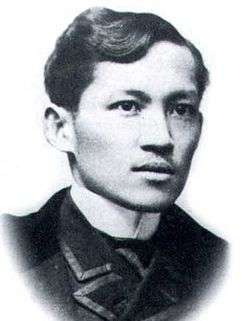
Dr. Jose Rizal.
-
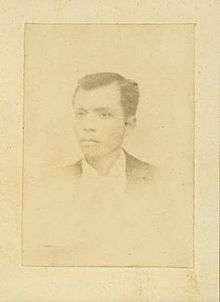
The single known extant photograph of Andres Bonifacio,the founder of Katipunan, Theleader of Philippine Revolution.
-
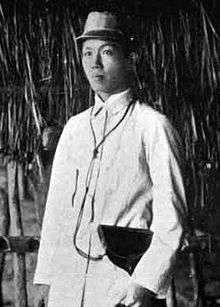
General Emilio Aguinaldo, First president of the Philippines.
-
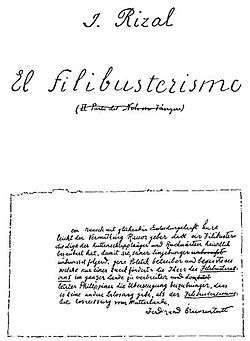
El Filibusterismo, The sequel of the Noli me Tangere.
-

The Malolos Congress.
-
.svg.png)
The Three Stars and a Sun design was conceived by President Emilio Aguinaldo. Sewn by Doña Marcela Marino de Agoncillo, Lorenza Agoncillo, and Delfina Herbosa de Natividad in Hong Kong and first flown in battle on May 28, 1898. It was formally unfurled during the Proclamation of Philippine Independence and the flag of the First Philippine Republic, on June 12, 1898 by President Aguinaldo. It contains a mythical sun (with a face) similar to the Sun of May.
-
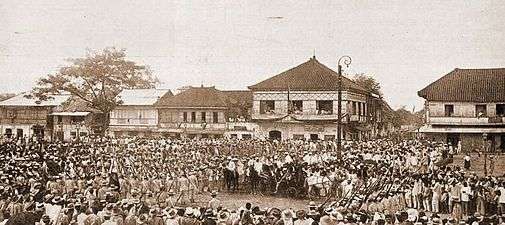
Marching Filipino soldiers during the inauguration of the First Philippine Republic in Malolos on January 23, 1899.
-
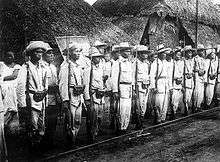
The soldiers of Philippine Revolutionary Army.
-
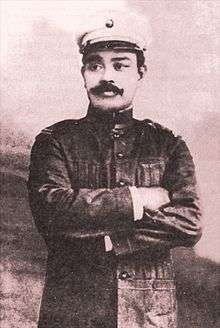
Antonio Luna, Regarded as one of the fiercest generals of his time, he succeeded Artemio Ricarte as Chief of Staff of the Armed Forces of the Philippines.
-

General Gregorio del Pilar and his troops in Pampanga, around 1898 (Philippine–American War).
20th century
| Year | Date | Event | Source |
|---|---|---|---|
| 1901 | March 2 | The Army Appropriation Act, also known as the Spooner Amendment, is passed by the US Senate. | |
| March 23 | Aguinaldo is captured by US authorities. | ||
| April 1 | Aguinaldo takes an oath of allegiance to the US. | ||
| June 17 | El Colegio de San Beda established | ||
| July 4 | Adna Chaffee appointed as the last US Military Governor (1901–1902) | ||
| A civil government is established in the Philippines with William Howard Taft as the first Civil Governor (1901–1904) | |||
| July 18 | The US organizes the Philippine Constabulary | ||
| August 28 | Silliman Institute, later known as Silliman University, is established as the first American university in the Philippines | ||
| September | The first Filipino members of the second Philippine Commission are appointed | ||
| September 27 | Guerillas, headed by the Filipino Captain Daza, attack the US military barracks in Balangiga, Samar | ||
| September 28 | Balangiga massacre occurs | ||
| October 20 | A U.S. Marine battalion arrives on Samar to conduct the March across Samar operation | ||
| November 4 | The Philippine Commission enacts the Sedition Law | ||
| December 14 | An earthquake estimated of magnitude 7.8 shakes Lucena City. | ||
| 1902 | January | The first labor union of The Country, Union de Litografose Impresores de Filipinas, is organized. | |
| January 21 | The Philippine Commission calls for the organization of Public Schools in the Philippines. | ||
| March 30 | The US Marines leave Balangiga | ||
| April 16 | General Miguel Malvar surrenders to the US forces | ||
| May | Governor Taft negotiates with Pope Leo XIII the sale of the friar lands in the Philippines | ||
| May 2 | Macario Sakay establishes a second Tagalog Republic. | ||
| July 1 | The Philippine Organic Act was enacted. | ||
| Cooper Act is passed by the US Senate. Philippine Assembly is established | |||
| July 4 | Americans proclaim the end of the Philippine–American War, however fighting continues | ||
| August 3 | The Foundation of Iglesia Filipina Independiente separated from Roman Catholic Church was proclaimed by The Union Obrera Democratica with Gregorio Aglipay as The 1st Obispo Maximo | ||
| September 17 | Pope Leo XIII formally bestows a Pontifical title on the University of Santo Tomas | [28][29] | |
| November 12 | Bandolerism Act passed by the Philippine Commission. All armed resistance against US rule are considered banditry | ||
| 1903 | Governor Taft enunciates the policy of The Philippines for the Filipinos | ||
| June 1 | Moro Province was established. | ||
| 1904 | February 1 | Luke Edward Wright appointed as Civil Governor (1904–1905) | |
| October 19 | The Manila Business School was founded and started its operation (later as the Philippine School of Commerce, 1908, then as the Philippine College of Commerce, 1952, and now the Polytechnic University of the Philippines). | ||
| 1905 | November 3 | Henry Clay Ide appointed as Civil Governor (1905–1906) | |
| 1906 | September 20 | James Francis Smith appointed as Civil Governor (1906–1909) | |
| December 3 | St. Scholastica's College established by the Benedictine Missionary Sisters of Tutzing | ||
| 1907 | June 3 | Centro Escolar University established as Centro Escolar de Señoritas. | |
| June 30 | First Congressional Elections held | ||
| September 13 | Macario Sakay is executed by hanging, ending his Tagalog Republic. | ||
| October 16 | The First Philippine Assembly is convened. | ||
| 1908 | June 18 | The University of the Philippines is established in Manila. | |
| 1911 | January 27 | Mt Taal erupts, and kills 1,334 people | |
| June 16 | De La Salle University-Manila is founded as De La Salle College by the Brothers of Christian Schools. | ||
| December 28 | Tricentennial of the Royal and Pontifical University of Santo Tomas | [28][29] | |
| 1913 | September 1 | Newton W. Gilbert appointed as acting Civil Governor (1913) | |
| October 6 | Francis Burton Harrison appointed as Civil Governor (1913–1921) | ||
| 1914 | July 27 | Iglesia ni Cristo (largest independent church in Asia) is registered to the government. | |
| 1916 | October 16 | The Jones Law is passed establishing an all-Filipino legislature | |
| Manuel Quezon elected Senate President while Sergio Osmenna is elected as House Speaker of the House of Representatives of the Commonwealth of the Philippines | [38][39][40][41][42] [43][44][45] | ||
| 1917 | January 11 | The first cabinet of Filipinos under the US regime is organized. | |
| March 10 | Ambos Camarines Dissolved; Split into Camarines Norte and Camarines Sur. | ||
| 1919 | September 19 | The silent film Dalagang Bukid by José Nepomuceno was released, the first film to be produced locally. | |
| 1921 | March 5 | Charles Yeater appointed as acting Civil Governor (1921) | |
| October 14 | Leonard Wood appointed as Civil Governor (1921–1927) | ||
| 1923 | August 29 | Santiago Ronquillo, a.k.a. Tiagong Akyat, was killed by a force consisting of Manila Chief of Police John Fulton Green and the Philippine constabulary, in Noveleta, Cavite. | |
| 1927 | August 7 | Eugene Allen Gilmore appointed as acting Civil Governor (1927) | |
| December 27 | Henry L. Stimson appointed as Civil Governor (1927–1929) | ||
| 1929 | February 23 | Eugene Allen Gilmore appointed as acting Civil Governor (1929) | |
| July 8 | Dwight F. Davis appointed as Civil Governor (1929–1932) | ||
| 1930 | November 30 | The Communist Party of the Philippines is formally established | |
| 1932 | January 9 | George C. Butte appointed as acting Civil Governor (1932) | |
| February 29 | Theodore Roosevelt, Jr. appointed as Civil Governor (1932–1933) | ||
| June 20 | Adamson School of Industrial Chemistry (ASIC) later known as Adamson University was founded by George Lucas Adamson | ||
| October 26 | The Communist Party of the Philippines is declared illegal by the Supreme Court | ||
| 1933 | July 15 | Frank Murphy appointed as the last Civil Governor of the Philippines (1933–1935) | |
| December 7 | Governor-General Frank Murphy granted the Right of Suffrage to the Filipino women. | ||
| 1934 | March 24 | The Tydings-McDuffie Law, known as the Philippine Independence Law, is approved by US President Roosevelt. | |
| July 10 | 202 delegates are elected to the Constitutional Convention in accordance with the Tydings-McDuffie Law | ||
| July 30 | The Philippine Constitutional Convention is inaugurated | ||
| 1935 | February 8 | The Constitutional Convention creates a new constitution | |
| February 15 | The Philippine Constitution is signed | ||
| May 2 | The Sakdalista uprising | ||
| May 14 | The Philippine electorate ratifies the Constitution in a referendum | ||
| September 17 | Manuel Quezon elected President in the first Philippine Presidential elections | [38][39][40][41][42] | |
| November 15 | The Philippine Commonwealth is inaugurated | ||
| The Office of Civil Governor is abolished | |||
| December 21 | The National Defense Act of 1935 that created the Armed Forces of the Philippines was signed. | ||
| 1936 | March 25 | President Manuel L. Quezon issued Executive Order No. 23 which provided for the technical description and specifications of the Philippine national flag. | [38][39][40][41][42] |
| October 31 | The Boy Scouts of the Philippines was established. | ||
| 1937 | February 3–7 | 33rd International Eucharistic Congress was held in Rizal Park, Manila, Philippines; first in Asia. | |
| 1939 | July 15 | DZRH (KZRH) the first commercial radio station in the Philippines was founded by Samuel Gaches, the owner of H. E. Heacock Company, a department store company based in Escolta, Binondo, Manila. | |
| 1940 | May 26 | The Girl Scouts of the Philippines was established. | |
| 1941 | November 11 | Manuel Quezon re-elected as President | [38][39][40][41][42] |
| December 8 | Start of the Japanese Invasion of the Philippines | ||
| December 20 | President Quezon, his family and the war cabinet move to Corregidor Island | [38][39][40][41][42] | |
| December 26 | General MacArthur declares Manila an open city | [46][47][48][49][50] | |
| December 28 | Filipino and US armies retreat to Bataan | ||
| December 30 | Manuel Quezon takes his oath of Office at the Corregidor Island | [38][39][40][41][42] | |
| 1942 | January 2 | Japanese troops enters Manila | |
| January 3 | Masaharu Homma appointed as Japanese Military Governor (1942) | ||
| General Masaharu Homma declares the end of American Rule in the Philippines | |||
| Martial Law declared | |||
| January 13 | All forms of opposition against the Japanese forces declared subject to death penalty | ||
| January 23 | An executive committee, composed of Filipinos, is formed by General Homma as a conduit of the military administration's policies and requirements. | ||
| February 17 | The Japanese Military Government issues an order adopting the Japanese educational system in The Country | ||
| February 20 | President Quezon and the war cabinet leave for the US | [38][39][40][41][42] | |
| March 11 | General MacArthur leaves for Australia to take command of the South Western Pacific Area | [46][47][48][49][50] | |
| March 13 | The Commonwealth government is moved to the US | ||
| March 29 | The People's Anti-Japanese Army or Hukbong Bayan Laban sa Hapon (Hukbalahap) is organized. | ||
| April | A pro-US resistance movement is organized, mainly to provide data to the US on enemy positions | ||
| April 9 | Bataan, under US commander General Edward King, is the last province that surrenders to the Japanese armies. | ||
| May 6 | Corregidor Island falls to Japanese forces | ||
| June 8 | Shizuichi Tanaka appointed as Japanese Military Governor (1942–1943) | ||
| June 14 | The Commonwealth of the Philippines becomes a member of the United Nations | ||
| December 30 | The Kalibapi is organized by the Japanese | ||
| 1943 | May 28 | Shigenori Kuroda appointed as Japanese Military Governor (1943–1942) | |
| June 20 | Japanese Premier Hideki Tojo nominates an all Filipino 20 member Preparatory Commission for Philippine Independence | ||
| September 4 | The Philippine Preparatory Commission for Independence drafts a new Constitution which provides for a unicameral national assembly | ||
| September 20 | The 108 delegates to the National Assembly are chosen by the members of the Preparatory Commission for Philippine Independence. | ||
| September | Jose P. Laurel elected President of the Philippines by the National Assembly | [51][52][53] | |
| October 14 | The puppet government is inaugurated. Laurel takes his oath of office | [51][52][53] | |
| November | The Philippine economy collapses, the shortage of rice becomes serious. | ||
| 1944 | May | The puppet government inaugurates the Green Revolution Movement. | |
| August 1 | Sergio Osmena assumes the Office of the President of the Commonwealth of the Philippines after the death of Manuel Quezon | [38][39][40][41][42] [43][44][45] | |
| September 21 | US forces raids Manila | ||
| September 26 | Tomoyuki Yamashita appointed as Japanese Military Governor (1944–1945) | ||
| October 20 | General MacArthur lands in Palo, Leyte, accompanied by President Sergio Osmena and US troops | [43][44][45][46][47] [48][49][50] | |
| October 23 | The Commonwealth government of the Philippines is re-established in Tacloban, Leyte | ||
| December 8 | Pro-Japanese Philippine generals Pio Duran and Benigno Ramos organize the Makapilis | ||
| 1945 | January 30 | Raid at Cabanatuan: 121 American soldiers and 800 Filipino guerrillas free 813 American Prisoners of war from the Japanese-held camp in the city of Cabanatuan in the Philippines. | |
| February 4 | US troops enter Manila | ||
| February 22 | Hukbalahap troop leaders arrested by the US forces | ||
| February 24 | The Battle of Manila ends. The Japanese surrender to the combined US and Filipino troops | ||
| February 27 | MacArthur hands over Malacanang Palace to Osmena. | [43][44][45][46][47] [48][49][50] | |
| March 3 | The US and Filipino troops recaptured Manila. | ||
| March 16 | Establishment of the Congress of Labor Organizations (CLO), a federation of labor organizations organized by former leaders of the Hukbo ng Bayan Laban sa mga Hapon (Hukbalahap). | [54] | |
| March 22 | The families of pro-Japanese President Laurel and Speaker Aquino leave The Country for Japan to seek refuge | [51][52][53] | |
| March 28 | Birth of Rodrigo Duterte, President of the Philippines. | ||
| June 5 | The Congress elected in 1941 convenes for the first time | ||
| July 5 | General MacArthur announces the liberation of the Philippines | [46][47][48][49][50] | |
| August 6 | The American forces drop an atomic bomb over Hiroshima, Japan. | ||
| August 9 | The American forces an atomic bomb over Nagasaki, Japan. | ||
| August 15 | The Empire of Japan accepts defeat | ||
| August 17 | Philippines President José P. Laurel issues an Executive Proclamation putting an end to the Second Philippine Republic, thus ending to his term as President of the Philippines. | [51][52][53] | |
| September 2 | The final official Japanese Instrument of Surrender is accepted by the Supreme Allied Commander, General Douglas MacArthur, and Fleet Admiral Chester W. Nimitz for the United States, and delegates from Australia, New Zealand, the United Kingdom, The Netherlands, China, and others from a Japanese delegation led by Mamoru Shigemitsu, on board the American battleship USS Missouri in Tokyo Bay. | [46][47][48][49][50] | |
| Japanese general Tomoyuki Yamashita surrenders to Filipino and American forces at Kiangan, Ifugao. | |||
| September 12 | Jose P. Laurel is arrested by the US army | [51][52][53] | |
| October 24 | The United Nations is founded by ratification of its Charter, by 29 nations. | ||
| December | Manuel Roxas separates from the Nacionalista Party of Sergio Osmena Sr and joins the Liberal Party | [43][44][45] | |
| 1946 | February 23 | Tomoyuki Yamashita was hanged at Los Baños, Laguna prison camp. | |
| April 23 | Manuel Roxas wins in the last Presidential Election under the Commonwealth | ||
| June 30 | The dissolution of the mainly general headquarters military camp base of the Philippine Commonwealth Army and Philippine Constabulary are station's located in the City of Manila and around the provinces of the archipelago was aftermath of the Second World War. | ||
| July 4 | The United States recognizes the Independence of the Republic of the Philippines | ||
| September 30 | The Amended Tenancy Act is promulgated. | ||
| 1947 | January 28 | President Roxas issues an amnesty proclamation to collaborators | |
| March 6 | HUKBALAHAP declared illegal | ||
| March 14 | The Treaty of General Relations between Philippines and United States was signed. | ||
| September 8 | The Philippine representative to the Far Eastern Commission, Carlos P. Romulo, signs the Japanese Peace Treaty | ||
| 1948 | April 15 | President Roxas dies from a heart attack at Clark Air Field; Vice President Quirino Assumes the Office of President | |
| April 17 | Elpidio Quirino takes his oath of office as President of the Philippines | ||
| 1949 | April 28 | Aurora Quezon (widow of Pres. Manuel Quezon) was ambushed by the Hukbalahap in Bongabon, Nueva Ecija. | [38][39][40][41][42] |
| 1950 | June | The Philippines joins the Korean War, sending over 7,000 troops under the United Nations command. | |
| August 31 | President Quirino appoints Ramon Magsaysay as Secretary of the Department of National Defense | ||
| 1951 | March 6 | Fort Santiago was declared a National Shrine. | |
| August | The National Movement for Free Elections (NAMFREL) is established | ||
| August 30 | The Mutual Defense Treaty between Philippines and United States was signed. | ||
| October 8 | Nicasio “Asiong” Salonga, branded as Tondo’s Public Enemy No. 1 and the kingpin of Manila, was shot and killed by Ernesto Reyes, a henchman of his rival and also notorious gang leader Carlos “Totoy Golem” Capistrano. | [55] | |
| 1953 | November 10 | Ramon Magsaysay is elected President of the Republic of the Philippines | |
| December 30 | Magsaysay takes his oath of office | ||
| 1954 | July 21 | The Southeast Asia Collective Defense Treaty is signed in Manila, creating the South East Asian Treaty Organization (SEATO) | |
| September 2 | At least 82 people were killed in a train crash in Negros Occidental. | ||
| December 15 | The Laurel-Langley Agreement is signed | [51][52][53] | |
| 1957 | March 17 | President Magsaysay dies in a plane crash; Vice-President Carlos P. Garcia assumes the presidency | |
| November 14 | Carlos P. Garcia elected President of the Republic of the Philippines | ||
| 1958 | August 28 | The Filipino first policy is promulgated | |
| 1960 | February 8 | Birth of Benigno Aquino III, President of the Philippines. | |
| 1961 | January 18 | Baguio City experience cold at 6.3-degree Celsius, the country's lowest temperature ever recorded. | |
| December 7 | Diosdado Macapagal elected President of the Republic of the Philippines. | ||
| December 30 | Macapagal takes his oath of office | ||
| December 31 | Inauguration of the new City of Lapulapu, created by Republic Act No. 3134 on June 17, 1961. | ||
| 1962 | May 12 | Independence Day is changed to June 12 by Diosdado Macapagal | |
| 1963 | April 5 | Ferdinand Marcos became President of the Senate of the Philippines. | |
| April 12 | Death of Felix Y. Manalo, founder of Iglesia ni Cristo at age of 76 | ||
| July 28 | A total of 60 people, including 24 Filipino Boy Scouts and Scout officials en route to Athens, Greece for the 11th World Jamboree, perished when the United Arab Airlines Flight 869 crashed into the Arabian Sea a few miles off Bombay, India. | [56] | |
| August 8 | Diosdado Macapagal signed the Agricultural Land Reform Code | ||
| 1964 | February 6 | Death of former president Emilio F. Aguinaldo | |
| August 14 | Miss Philippines Gemma Cruz was crowned Miss International 1964, the first Filipino to win the title. | ||
| 1965 | November 9 | Ferdinand Marcos elected President of the Republic of the Philippines | |
| December 30 | Ferdinand Marcos takes his oath of office | ||
| 1966 | April | With the enactment of Republic Act No. 4695, the huge old Mountain Province was abolished and split into four provinces: Benguet, Mountain Province, Kalinga-Apayao and Ifugao. | |
| July 4 | The Beatles visits the Philippines for a concert in Manila. | ||
| 1967 | August 8 | ASEAN (Association of Southeast Asian Nation) was formed. | |
| 1968 | March 18 | Jabidah massacre | |
| August 2 | 1968 Casiguran earthquake and the collapse of Ruby Tower | ||
| December 26 | A new Communist Party of the Philippines established by Jose Maria Sison. | ||
| 1969 | March 29 | Jose Maria Sison formally organizes the military arm of the Communist Party of the Philippines, The New People's Army | |
| May 11 | Tuguegarao City in Cagayan experienced heat at 42.2 degrees Celsius, the country's highest temperature ever recorded. | ||
| July 19 | Miss Philippines Gloria Diaz was crowned Miss Universe 1969. | ||
| November 11 | Ferdinand Marcos re-elected President of the Republic of the Philippines | ||
| 1970 | January | First Quarter Storm begins. | |
| November 17 | Elections for 315 members of a Constitutional Convention held. | ||
| November 20 | Typhoon Yoling was one of the deadliest typhoons to strike the Philippines in its history. 611 people were killed | ||
| November 27 | Pope Paul VI makes his first papal visit in the Philippines, but survived an assassination attempt by Benjamín Mendoza y Amor Flores at Manila International Airport. | ||
| 1971 | February 1–9 | Diliman commune | |
| June 1 | The Constitutional Convention assembles to rewrite the 1935 Constitution. The Convention elects former President Carlos Garcia as its head. | ||
| June 14 | Garcia dies and former President Diosdado Macapagal takes over the top position at the Convention. | ||
| August 21 | Plaza Miranda bombed during the election campaign of the Liberal Party | ||
| August 22 | President Marcos suspends the Writ of Habeas Corpus | ||
| October 10 | Leonardo “Nardong Putik” Manecio, one of the most notorious gangsters and dubbed as Cavite’s Public Enemy No. 1 was killed in Imus in a highway shootout with NBI agents. | [55] | |
| 1972 | Suspicious bombing incidents increase all over the country. The MNLF launches its campaign for the independence of the Muslim provinces. | ||
| September 21 | President Marcos signs the Martial Law Edict (at that time not publicly announced). | ||
| September 22 | Assassination attempt on Defense Minister Juan Ponce Enrile | ||
| Marcos places the entire country under martial law | |||
| September 23 | The implementation of martial law is officially announced | ||
| Marcos Government shut down and seized ABC-5 (Associated Broadcasting Corporation) and ABS-CBN to take control of all PH media. | |||
| Senator Benigno Aquino, Jr. is arrested without due cause. | |||
| September 26 | The whole country is proclaimed a land reform area and an Agrarian Reform Program is decreed. | ||
| The first major armed defiance of martial law takes place in Lanao del Sur | |||
| October 22 | The battle between the MNLF and the government troops ends with the latter regaining control of the city. | ||
| November 29 | The Constitutional Convention passes the new Constitution of the Philippines. | ||
| 1973 | Misuari leaves The Country for Libya to solicit armed support from Muslim countries for the war in Mindanao. | ||
| January 10 | A fake plebiscite referendum is held among the citizens' assemblies to ratify the new Constitution | ||
| January 15 | Chinese drug lord Lim Seng faced his public execution by firing squad at a lot behind the Libingan ng mga Bayani in Fort Bonifacio,[57] the country's first and last of its kind in the post-war Philippine history. | ||
| April | The National Democratic Front (NDF), the united front organization of the Communist Party of the Philippines, is formally organized. | ||
| July 21 | Miss Philippines Margarita Moran was crowned Miss Universe 1973. | ||
| July 27 | Marcos' term as President extended by virtue of a referendum, which was latter proven as a hoax | ||
| November 22 | Dissolution of Empire Province of Cotabato. | ||
| 1974 | February 27 | Presidential appointments to local elective positions declared legal by virtue of another referendum | |
| March 11 | Japanese lieutenant Hiroo Onoda, one of the longest-remaining Japanese holdouts, formally surrendering his sword to President Marcos at Malacañang Palace after continuing to fight for 29 years in the Lubang Island. | [57] | |
| July 21 | Miss Universe 1974, its 23rd pageant, was held in Manila. | ||
| December 1 | Jose Sison's essay entitled Specific Characteristics of Our People's War published | ||
| 1975 | April 9 | The Philippine Basketball Association was formed in Quezon City. | |
| October 2 | Thrilla in Manila | ||
| November 1 | President Ferdinand Marcos issued Presidential Decree 824 creating the Metropolitan Manila Commission (MMC). | ||
| 1976 | January 4 | New people's Army Spokesman Satur Ocampo arrested | |
| August 17 | An earthquake of 7.8 magnitude and a following tsunami (flood wave) kills 8,000 people on and off the coast of Mindanao. | ||
| August 26 | Kumander Dante of the New People's Army arrested | ||
| October 16 | Martial Law allowed to extend by virtue of a Plebiscite | ||
| December 23 | Tripoli Agreement signed | ||
| 1977 | January 20 | The Armed Forces of the Philippines enters into a ceasefire agreement with the MNLF. | |
| March 4 | President Marcos issues a decree creating the autonomous Bangsamoro Islamic Government | ||
| October | Eugenio Lopez, Jr. and Sergio Osmeña III escaped from detention in Fort Bonifacio and flee to the United States. | ||
| November 10 | The CPP head Jose Maria Sison arrested | ||
| November 25 | The Military Commission found Benigno Aquino, Jr. guilty of all charges and sentenced him to death by firing squad. but he escaped execution. | ||
| December 16 | A referendum is held, the result of which again empowers the President to continue in office, and to become Prime Minister as well. | ||
| 1978 | Rodolfo Salas takes over the leadership of the Communist Party of the Philippines. | ||
| April 8 | Members of the Interim Batasang Pambansa are elected. | ||
| October 5 | Jesus is Lord Church led by Eddie Villanueva, a former activist and professor was established. | ||
| 1979 | April 10 | President Ferdinand Marcos issues Presidential Decree No. 1616 creating the Intramuros Administration | [58] |
| July 30 | Eat Bulaga!, the longest running noon-time variety show in the Philippines, premiered on RPN. It was also aired on ABS-CBN from 1989 to 1995 and on GMA Network since 1995. | ||
| October 31 | Project Gintong Alay, a national sports program was commenced. | ||
| 1980 | April 22 | MV Don Juan bound for Bacolod City sank 20 nautical miles (37 km) off Maestre de Campo Island, Oriental Mindoro after colliding with the oil tanker M/T Tacloban City. Reported casualties were 18 dead and 115 missing, with 745 survivors. | |
| 1981 | January 18 | Martial law lifted. | |
| February 17–21 | Pope John Paul II visited the Philippines for his first papal visit. | ||
| June 16 | Philippine general election and referendum, 1981 (Ferdinand Marcos re-elected to a third term). | ||
| June 30 | Finance Minister Cesar Virata is elected Prime Minister by the Batasang Pambansa | ||
| November 17 | Accident during the construction of the Manila Film Center, 169 were killed. | ||
| 1982 | March 30 | At least 38 deaths resulted when Typhoon Nelson tore through the central and southern areas of the country. | |
| 1983 | August 21 | Benigno Aquino, Jr. assassinated | |
| 1984 | May 14 | Philippine parliamentary election, 1984 | |
| August 19 | El Shaddai DWXI Prayer Partners Foundation International, Inc. led by Bro. Mike Z. Velarde, a geological engineer and movie producer was established. | ||
| September 1 | Typhoon Nitang struck the Philippines. It killed 1,492 people and 1,856 more were injured. Roughly 1.6 million people were affected in the country. | ||
| November 14 | Cesar Climaco assassinated | ||
| December 1 | Manila LRT Line 1 opened as the Southeast Asia's first rail line. | ||
| 1985 | June 12 | New Design Banknotes Released | |
| September 20 | The Escalante massacre was an incident in Escalante City, Negros Occidental where paramilitary forces of the government gunned down civilians engaged in a protest-rally in commemoration of the 13th anniversary of the declaration of Martial Law. | ||
| December 2 | Armed Forces of the Philippines chief of staff General Fabian Ver and 25 others were acquitted. | ||
| December 9 | Philippine Daily Inquirer released its first issue. | ||
| 1986 | February 7 | Philippine presidential election, 1986 | |
| February 9 | Thirty computer technicians of the Commission on Elections walked out of their jobs after they were ordered to cheat the election returns in favor of President Marcos. | [54] | |
| February 16 | Batasang Pambansa declared Marcos and Arturo Tolentino as President and Vice-President, respectively. Corazon Aquino, widow of Benigno Aquino, Jr., expressed protest. | ||
| February 22–25 | EDSA Revolution ousts President Marcos; Corazon Aquino becomes president | ||
| March 25 | Aquino abolishes Interim Batasang Pambansa and the constitution and adopts Freedom Constitution. | ||
| July 22 | DZMM and DWKO established as the first post-revolution radio stations. | ||
| July 28 | The Philippine Star released its first issue. | ||
| September 13 | The Mt. Data Peace Accord was signed between the Philippine Government and the separatist Cordillera Bodong Administration-Cordillera People's Liberation Army. | ||
| November 13 | KMU chairman Rolando Olalia was shot dead in Antipolo, Rizal by attributing his party leaders within the military. | ||
| 1987 | January 22 | Mendiola massacre occurred, 13 people were killed | |
| February 2 | The constitution drafted by the Constitutional Commission of 1986 is adopted, after a vote of 76.37% in the referendum for its ratification. | ||
| February 11 | Manila Standard (now The Standard) released its first issue. | ||
| March 2 | TV Patrol, the longest-running Filipino spoken evening newscast, starts its broadcast on ABS-CBN. | ||
| May 11 | Philippine legislative election, 1987 | ||
| June 27 | Philippine Airlines PR 206 crashes into a mountain in Benguet with 50 passengers killed. | ||
| August 28–29 | Coup attempt takes place when rebel soldiers made a threatened reprisal against Aquino and ended in a gunfight with 50 people killed and 200 wounded as Government troops fizzled the plot. | ||
| October 18 | Canonization of San Lorenzo Ruiz, the first Filipino saint | ||
| November 25 | Super Typhoon Sisang slammed into Luzon, killing 1,063 people. | ||
| December 20 | The passenger ferry MV Doña Paz and the oil tanker MT Vector are collided and sank in Tablas Strait, killing 4,341 passengers and crew. The collision made as the deadliest peace-time maritime disaster of the 20th century. | ||
| 1988 | January 18 | Local elections were held under the 1987 Constitution of the Philippines. | |
| June 10 | Comprehensive Agrarian Reform Program was signed by President Aquino to provide land reform for Filipino farmers. | ||
| October 17 | Interior Bases Agreement was signed by the Philippines and United States. | ||
| October 23–24 | Typhoon Unsang struck into Luzon. | ||
| 1989 | January 5 | Camp Cawa-Cawa in Zamboanga City was seized by Rizal Alih and his armed mutinous soldiers. The hostage of the police headquarters building was ended in a gunfight and an airstrike which killed seven people including Gen. Eduardo Batallia and Col. Romeo Abendan of the Philippine Constabulary. | |
| March 31 | The famous alleged Marian apparition in the town of Agoo, La Union to Judiel Nieva. | ||
| July 17 | DZBB established as the first AM radio stations was known as Bisig Bayan. | ||
| August 1 | Autonomous Region of Muslim Mindanao region was first created through Republic Act No. 6734 (the Organic Act). | ||
| August 13–15 | A hostage crisis at the Davao Metropolitan District Command Center (Davao Metrodiscom) occurred, perpetrated by the group of inmates led by Felipe Pugoy and Mohammad Nazir Samparani which resulted to the death of 5 hostages and all 16 inmates. | ||
| September 28 | Death of Ferdinand Marcos | ||
| December 1–9 | The most serious coup d'etat against the government of Philippine President Corazon Aquino was staged by members of the Armed Forces of the Philippines belonging to the Reform the Armed Forces Movement (RAM) and soldiers loyal to former President Ferdinand Marcos led by Colonel Gregorio Honasan, General Edgardo Abenina, and retired General Jose Ma. Zumel. | ||
| 1990 | March 4 | Hotel Delfino in Tuguegarao, Cagayan was seized by suspended Governor Rodolfo Aguinaldo and his armed men of 200. The siege was immediately followed by a gunfight, killing Brigader General Oscar Florendo, his driver and four members of the civilian staff and several guests, and 10 more wounded. Aguinaldo was escaped in the mountains after a shootout in a military checkpoint. | |
| April 25 | Two U.P. Students, Ernesto "Cochise" Bernabe II and his girlfriend Anna Lourders "Beebom" Castanos were abducted and killed in Pampanga. | ||
| July 16 | The Luzon earthquake struck with a surface wave magnitude of 7.8. The earthquake caused damage within an area of about 20,000 square kilometers, stretching from the mountains of the Cordillera Administrative Region and through the Central Luzon region. | ||
| October 4–6 | Forces loyal to Col. Alexander Noble declared the independence of Mindanao in December 4 and seized two military garrisons in Cagayan de Oro and Butuan. Noble forces were compromised by government forces and later turned himself in to the government in December 6. | ||
| November 12 | Typhoon Ruping slammed Visayas and affected Cebu City, Bacolod City, and other key cities in the Visayas. | ||
| 1991 | January 29 | Merger of the Philippine Constabulary with the Integrated National Police to form the Philippine National Police. | |
| June 15 | Mount Pinatubo erupts in what will be the second largest terrestrial eruption of the 20th century; the final death toll tops 800. | ||
| June 30 | The massacre of Estrellita, Carmela, and Jennifer Vizconde. | ||
| July 13 | Hultman-Chapman murder case | ||
| September 16 | Senate of the Philippines rejects renewal of U.S military bases in the Philippines | ||
| November 4–5 | Tropical Storm Uring lashes into Eastern Visayas, leaving 8,000 people dead as a result of widespread flooding in the coastal city of Ormoc, Leyte. | ||
| 1992 | January 15 | Pag-asa was hatched in Davao City becoming the first Philippine eagle to be successfully bred and hatched in captivity. | |
| May 11 | Philippine general election, 1992 (Fidel V. Ramos is elected) | ||
| August 24–29 | The team representing the Zamboanga City Little League won the International Championship of the 1992 Little League World Series held in Pennsylvania. However, it was discovered that the Filipino team violated age and residency rules and Little League stripped them of their title. | ||
| 1993 | June 28 | Sarmienta-Gomez Rape-slay case. | |
| July 2 | A pagoda sank in Bocaue, Bulacan, killing 266 people. | ||
| September 11 | Ferdinand Marcos remains was laid to rest in Batac, Ilocos Norte. | ||
| September 24 | Biggest corruption case in the Philippines. Former first lady Imelda Marcos was convicted for the first time of corruption and sentenced to 24 years in prison. | [54] | |
| 1994 | March 29 | The Philippines gets connected to the Internet. | |
| May 21 | Miss Universe 1994, its 43rd pageant, was held in Manila. | ||
| November 15 | Mindoro Earthquake | ||
| December 27 | A scandal broke out during the 1994 Metro Manila Film Festival's Gabi ng Parangal held in PICC, the case in which both the Best Actress and Best Actor awards were given to Ruffa Gutierrez and Gabby Concepcion respectively instead of the supposed-to-be winners (Roi Vinzon and Kimberly Diaz). | ||
| 1995 | January 6 | Discovery of Bojinka plot. | |
| January 10–15 | Pope John Paul II visited the Philippines for the World Youth Day held in Manila. | ||
| March 17 | Flor Contemplacion was executed in Singapore. | ||
| April 3 | Ipil massacre | ||
| April 30 | President Ramos inaugurated the opening of Subic International Airport (formerly a United States military base). This indicates growth after the removal of military bases in the country. | ||
| May 8 | Philippine general election, 1995 | ||
| May 17 | Kuratong Baleleng shootout | ||
| October 31 | Super Typhoon Rosing | ||
| November 27 | The construction of the Skyway project was initiated, the biggest infrastructure project in the country that was intended to ease the flow of traffic in Metro Manila. | ||
| 1996 | March 18 | Fire razes Ozone Disco, killing 162 guests including college graduating students and 95 more injured. | |
| March 24 | Marcopper mining disaster | ||
| August 1 | Sarah Balabagan, the OFW who was accused of killing an Arab employee was freed. | ||
| August 4 | Onyok Velasco won the silver medal after he defeated the enemy in the semifinal round (boxing). But he lost a gold medal after defeated by the Bulgarian at the end of 1996 Atlanta Olympics. However, Velasco returned in the country as a hero and received over ₱10-million total prize. | ||
| September 2 | A permanent peace agreement is signed at the Malacañan Palace between the Government of the Philippines and the Moro National Liberation Front. | ||
| November 24–25 | 8th Asia-Pacific Economic Cooperation (APEC) Summit was held in Subic. | ||
| 1997 | July | Asian financial crisis | |
| 1998 | February 2 | Cebu Pacific Flight 387 crashed on the slopes of Mount Sumagaya in Claveria, Misamis Oriental, 104 passengers were killed. | |
| May 11 | Philippine general election, 1998 (Joseph Estrada is elected) | ||
| June 12 | Centennial of Philippine Independence | ||
| 1999 | February 5 | Leo Echegaray was the first Filipino to be executed by lethal injection at the New Bilibid Prison in Muntinlupa City. | |
| August 3 | A massive landslide occurred in Cherry Hills subdivision in Antipolo City, Rizal province that was primarily caused by the heavy rains of the approaching Typhoon Olga. |
-
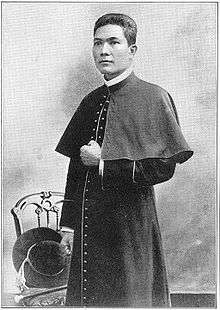
Gregorio Aglipay as the Obispo Maximus of the Iglesia Filipina Independiente.
-
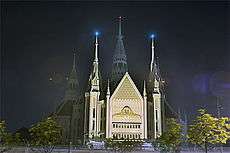
Tabernakulo of Iglesia ni Cristo in Quezon City, Philippines.
-
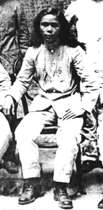
Macario Sakay, the unofficial President of the Tagalog Republic.
-
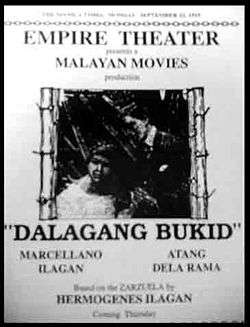
The film Dalagang Bukid was the first domestically-made film, Derected by Jose Nepumuceno.
-
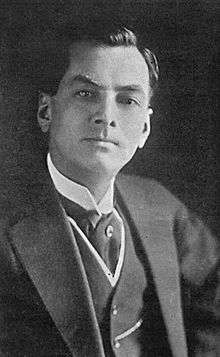
Manuel L. Quezon was the First President of Commonwealth of the Philippines, the father of Philippine Language.
-
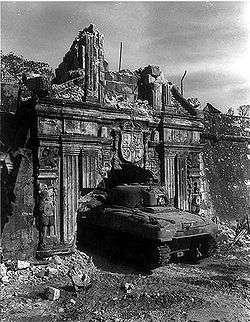
M4 Sherman tank at the ruins of the Fort Santiago gate, Intramuros, In the Battle of Manila 28 February 1945.
-
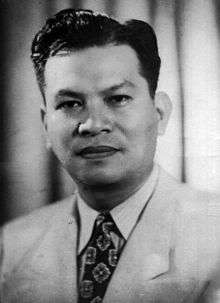
Ramon Magsaysay, the Man of Mass.
-
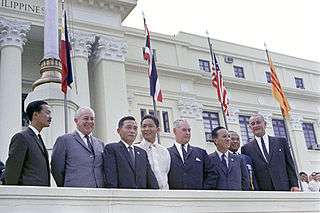
The leaders of some of the Southeast Asia Treaty Organization (SEATO) nations in front of the Congress Building in Manila, hosted by Philippine President Ferdinand Marcos on 24 October 1966.
-
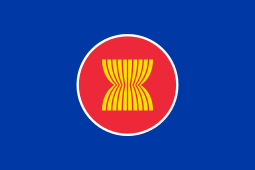
ASEAN was preceded by an organization formed in 1961 called the Association of Southeast Asia (ASA), a group consisting of the Philippines, Malaysia, and Thailand. ASEAN itself was created on 8 August 1967, when the foreign ministers of five countries: Indonesia, Malaysia, the Philippines, Singapore, and Thailand, signed the ASEAN Declaration, more commonly known as the Bangkok Declaration.
-
Ferdinand Marcos: The 10th President of the Philippines, The longest-term held in office.
-
The Empire Province of Cotabato has been dissolved in On November 22, 1973, the remaining territories of the Empire Province of Cotabato was divided into North Cotabato, Maguindanao and Sultan Kudarat through Presidential Decree No. 341.
-
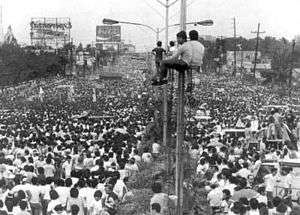
The People Power Revolution also known as EDSA I Deposed Ferdinand Marcos marks the end of his Dictatorship.
-
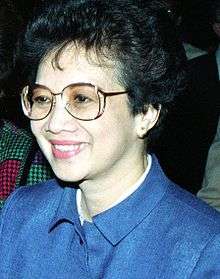
Corazon Aquino: The 11th President of the Philippines, The First-women held in office.
-
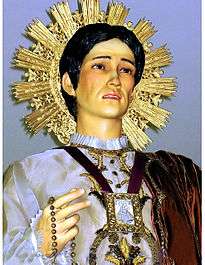
Lorenzo Ruiz proclaimed as a saint.
-

The eruption column of Mount Pinatubo on June 12, 1991, three days before the climactic eruption.
21st century
| Year | Date | Event | Source |
|---|---|---|---|
| 2000 | January 1 | The Philippines celebrates the new 2000 millennium nationwide. | |
| March 15 | President Estrada declares an "all-out-war" against the Moro Islamic Liberation Front (MILF). | ||
| April 19 | Air Philippines Flight 541 Boeing 737-2H4 crashed in Island Garden City of Samal, Davao del Norte, killing 131, the worst air disaster in the Philippine history. | ||
| May 3 | Abu Sayyaf terrorists hostaged 21 people including 10 tourists and 11 resort workers in a resort island of Sipadan, Malaysia. The hostage crisis lasts four months. | ||
| July 10 | Payatas landslide | ||
| November 13 | President Estrada impeached by House of Representatives | ||
| December 7 | The Senate formally initiated the proceedings in impeachment case against President Estrada. Chief Justice Hilario Davide, Jr. presided the trial. | ||
| December 30 | Rizal Day bombings | ||
| 2001 | January 16 | After 11 senators voted not to open the second envelope, which containing the documents against President Estrada, the prosecutors walked out. | |
| January 17–20 | EDSA II Revolution ousts Joseph Estrada; vice-president Gloria Macapagal-Arroyo becomes president | ||
| February 22 | Zamboanga Sibugay, the 79th province, was established by Republic Act No. 8973 signed into law by President Gloria Macapagal-Arroyo. | ||
| April 30 | EDSA III | ||
| May 14 | Philippine general election, 2001 | ||
| May 27 | Dos Palmas kidnappings; crisis lasted 12 months | ||
| August 18 | A fire swept through the Manor Hotel in Quezon City and killed at least 68 people. | ||
| 2002 | March 5 | Mindanao earthquake | |
| May 31 | Hostage crisis in Pasay City Bus Terminal, a 4-year-old boy was killed. | ||
| June 21 | Death of Abu Sabaya, leader of Abu Sayyaf. | ||
| 2003 | January 22–26 | 4th World Meeting of Families was held at the Quirino Grandstand. | |
| July 27 | Oakwood mutiny | ||
| 2004 | February 27 | SuperFerry 14 was bombed by the Abu Sayyaf terrorists killing 116 people. | |
| May 10 | Philippine general election, 2004 (Gloria Macapagal-Arroyo elected to a six-year term) | ||
| November 16 | Hacienda Luisita massacre occurred, 14 were killed. | ||
| December 14 | Death of Fernando Poe Jr. | ||
| 2005 | February 14 | Valentine's Day Bombings | |
| June 27 | Hello Garci scandal (Legitimacy of declared election winners questioned) | ||
| 2006 | February 4 | A stampede occurred at the PhilSports Complex, causing the deaths of 74 people. | |
| February 17 | Southern Leyte mudslide | ||
| February 24 | A state of emergency was declared in February in response to coup rumours. | ||
| May 18 | Mountaineer Leo Oracion reached the summit of Mount Everest via the Nepalese side. | ||
| June 24 | President Arroyo signed the repeal of the death penalty law. | ||
| August 11 | An oil spill off the coast of Guimaras occurs, causing widespread environmental damage. | ||
| September 28 | Typhoon Milenyo struck Luzon | ||
| November 30 | Typhoon Reming struck Bicol Region | ||
| December 2 | Dinagat Islands, the 80th province, was established as a province upon the approval of Republic Act No. 9355, in a plebiscite. | ||
| December 4 | Subic rape case verdict, Daniel Smith found guilty. | ||
| 2007 | May 14 | Philippine general election, 2007 | |
| July 11 | Fourteen members of the Philippine Marines were found beheaded after an encounter against Islamic rebels in Basilan | ||
| August 28 | Exiled Communist Party of the Philippines founding chairman Jose Maria Sison was arrested at Utrecht, Netherlands. | ||
| September 12 | The Sandiganbayan convicted former president Joseph Estrada for plunder and sentenced him to reclusion perpetua while acquitting him and his co-accused on other charges. | ||
| October 19 | Glorietta mall explosion | ||
| October 26 | Former President Joseph Estrada was pardoned and free from jail after his trial. | ||
| November 13 | An explosion at the House of Representatives building in Quezon City kills four people. | ||
| November 29 | Manila Peninsula mutiny | ||
| 2008 | February 4–5 | The House of Representatives voted to replace House Speaker Jose de Venecia with Prospero Nograles. | |
| February 8 | Jun Lozada, an official with the DENR, testified before the Philippine Senate in connection with the National Broadband Network contract deal. | ||
| March 24 | The family of Corazon Aquino announces that the former President is suffering from colon cancer. | ||
| May 16 | Eight employees and a security guard of a Rizal Commercial Banking Corporation (RCBC) branch in Cabuyao, Laguna were killed in a bank robbery. | ||
| May 27 | The Manila Electric Company held its tension-filled annual stockholders meeting, which lasted for more than 13 hours, making it the longest stockholders' meeting in Philippine corporate history. | ||
| June 21 | The MV Princess of the Stars, owned by Sulpicio Lines that carried 626 passengers and 121 crew members, stalled in rough seas near Sibuyan Island. | ||
| November 9 | Miss Philippines Karla Henry was crowned Miss Earth 2008 during the coronation night held at Angeles City, the first Filipino to win the title. | ||
| 2009 | January 15 | Three International Committee of the Red Cross volunteers were kidnapped by the rebel group Abu Sayyaf | |
| August 1 | Death of former president Corazon Aquino. | ||
| August 31 | Death of Eraño Manalo, Executive Minister of the Iglesia ni Cristo. | ||
| September 26 | Great Flood because of Typhoon Ondoy | ||
| November 23 | Maguindanao massacre | ||
| 2010 | May 10 | The 2010 Philippine general elections, also the first national computerized election in the Philippine history, took place. | |
| June 9 | President-elect Benigno Aquino III won the Presidential election, being the 15th President of the Philippines. | ||
| June 30 | Inauguration of the President-elect Benigno Aquino III took place, officially declaring him as the 15th President of the Philippines. | ||
| August 23 | The hostage crisis in Manila took place, killing eight Hong Kong holidaymakers. | ||
| October 16–18 | Typhoon Juan, officially as Typhoon Megi, hits northeastern Luzon at Sierra Madre, creating widespread damage over Luzon. | ||
| December 14 | Vizconde Massacre Case Finished. Result Webb's Freedom | ||
| December 16 | Philippine New Banknotes Released | ||
| 2011 | January 24 | UST Quadricentennial Celebration | |
| July 26 | The Heroism of 12-year-old Schoolgirl Janela Lelis. | ||
| August 11 | Atty. Koko Pimentel proclaimed as Senator of the Republic of the Philippines. | ||
| November 18 | Former President Gloria Macapagal-Arroyo was arrested. | ||
| December 12 | 188 members of the House of Representatives signed an impeachment complaint against Chief Justice Renato Corona. | ||
| December 16–18 | Typhoon Sendong crossed the Visayas and Mindanao region, leaving almost 1,500 people dead and more than thousands missing. | ||
| 2012 | January 7 | A landslide in Compostela Valley killed more than 30 people. | |
| May 29 | 20 of 23 Senators voted to find Chief Justice Renato Corona guilty on Article II of the Articles of Impeachment filed against him, removing him from office. | ||
| July 10 | Death of Comedy King Dolphy | ||
| August 18 | Death of Jesse Robredo, Secretary of the Department of the Interior and Local Government | ||
| October 15 | The Framework Agreement on the Bangsamoro is signed which seeks for the creation of a new autonomous political entity, Bangsamoro replacing the Autonomous Region of Muslim Mindanao. | ||
| October 21 | Canonization of San Pedro Calungsod | ||
| December 4–9 | Typhoon Pablo caused widespread destruction on the island of Mindanao, leaving thousands of people homeless. | ||
| December 21 | The Reproductive Health Bill was signed. | ||
| 2013 | May 13 | Philippine general election, 2013 | |
| May 15 | The Enhanced Basic Education Act of 2013, commonly known as K–12 program was signed. | ||
| July 27 | The United Federated States of Bangsamoro Republik (UFSBR) declares it independence from the Philippines | ||
| September 28 | The UFSBR ceases to exists as it is defeated in the Zamboanga City crisis. | ||
| Miss Philippines Megan Young was crowned Miss World 2013. | |||
| October 15 | At 8:12 a.m. (PST) in the morning, the Bohol province suffered a severe earthquake with a magnitude of 7.2 Ms. Its epicenter was located at a depth of 33 kilometres (21 mi), 2 kilometres (1.2 mi) east of Carmen, Bohol, and 629 kilometres (391 mi) from the Philippines' capital, Manila. The quake was felt as far as Davao City, a city located in the island of Mindanao. Ninety-nine were reported dead while 276 people were injured. It was the deadliest earthquake in the Philippines in 23 years. The energy of the quake released was equivalent to 32 Hiroshima bombs dropped in Hiroshima, Japan during the World War II. | ||
| October 28 | Davao Occidental, the 81st province, was established through its ratification in a plebiscite. | ||
| November 8 | Typhoon Haiyan known in the Philippines as "Yolanda" hits Regions MIMAROPA, Western Visayas, Central Visayas, and Eastern Visayas resulting of 6,201 deaths, 27,665 injured, 1,785 missing and ₱138,552,546.55 (US$3,208,322.78) total damages. | ||
| 2014 | February 15 | More than 519,221 members of the Iglesia ni Cristo joined the Worldwide Walk For Those Affected by Typhoon Yolanda held in Manila and in selected sites in the Philippines and abroad. | |
| March 27 | The Comprehensive Agreement on the Bangsamoro was signed. | ||
| May 23 | The Philippines and Indonesia signed a maritime treaty that draws the boundary of the two countries' overlapping Exclusive Economic Zone in Mindanao and Celebes seas. | ||
| July 27 | The Centennial Celebration of the Iglesia ni Cristo. | ||
| Philippines marks a milestone in its population growth identifying the birth of a baby girl in a Manila hospital as the 100 millionth Filipino. | |||
| September 10 | President Aquino III lead the handover of the draft of the Bangsamoro Basic Law to the Senate and House leaders in a historical turnover ceremony at the Malacañang. | ||
| November 20 | Ozone Disco Club fire Case Finished. Result 7 officials of Quezon City convicted. | ||
| December 6 | Typhoon Ruby, officially as Typhoon Hagupit hits Western Visayas, and Eastern Visayas, creating widespread damage over Visayas. | ||
| December 29 | BSP announces demonetizing the old Philippine Banknotes (issued in 1985). | ||
| 2015 | January 15–19 | The Papal visit of Pope Francis in the Philippines. | |
| January 25 | 44 PNP-SAF Officers were killed in Maguindanao. | ||
| February 25 | The AFP declared its all-out offensive campaign against the MILF break away group, the Bangsamoro Islamic Freedom Fighters. | ||
| April 14 | Death of Ameril Umbra Kato, the founding leader of the Bangsamoro Islamic Freedom Fighters. | ||
| April 29 | The execution of the convicted Filipina drug mule Mary Jane Veloso was postponed. | ||
| May 3 | Manny Pacquiao was defeated by Floyd Mayweather Jr. in the so-called Battle For Greatness in MGM Grand Garden Arena, Las Vegas, Nevada. | ||
| Abdul Basit Usman, the most wanted bomb expert in the country, was killed by a MILF group unit in Guindulungan, Maguindanao. | |||
| May 13 | Kentex Manufacturing slippers factory fire occurred. Result 72 employees were killed. | ||
| June 5 | President Benigno Aquino III signed Executive Order 183 that created the Negros Island Region. | ||
| June 28 | Death of Kumander Parago, the top commander of the New People’s Army. | ||
| July 23 | The Iglesia ni Cristo has expelled Tenny and Angel Manalo. | ||
| July 27 | President Benigno Aquino III takes his final State of the Nation Address. | ||
| August 27–31 | Iglesia ni Cristo members staged demonstrations near the DOJ office and later in EDSA. | ||
| October 18 | Typhoon Lando officially as Typhoon Koppu hits northern and central Luzon, creating widespread damage and floods over Luzon. | ||
| November 18–19 | APEC Philippines 2015 was held, which concluded with the APEC Economic Leaders' Meeting. | ||
| December 14–19 | Typhoon Nona devastates parts of the Philippines, killing 41 and cost ₱2 billion in damages. | ||
| December 21 | Miss Philippines Pia Alonzo Wurtzbach was crowned Miss Universe 2015. | ||
| 2016 | January 24–31 | 51st International Eucharistic Congress was held in Cebu City, Philippines. | |
| February 10 | The National Mapping and Resource Information Authority announces that it has documented more than 400 additional islands. | ||
| February 29 | Re-interment of the remains of the late former President Elpidio Quirino was held in Libingan ng mga Bayani on his 60th death anniversary. | ||
| March 23 | Diwata-1 was launched to the International Space Station aboard the Cygnus spacecraft on a supply mission. | ||
| April 1 | At least 3 are killed and several others were wounded when police dispersed a farmers' protest action in Kidapawan. | ||
| April 9 | 18 soldiers and 5 Abu Sayyaf bandits are killed during a clash in Tipo-Tipo, Basilan. | ||
| May 9 | The 2016 National and Local elections was held. | ||
| May 22 | Arianwen Rollan was awarded for her Malunggay Anti-Cancer research. | ||
| Jaclyn Jose wins the Cannes Film Festival Award for Best Actress at the 2016 Cannes Film Festival. | |||
| May 28 | Philippines beats Thailand in the 2016 SEABA Stankovic Cup. | ||
| May 30 | Rodrigo Duterte and Leni Robredo were proclaimed as the new President and Vice President of the Philippines. | ||
| June 30 | Rodrigo Duterte and Leni Robredo were inaugurated as the 16th President of the Philippines and 14th Vice President of the Philippines. | ||
| July 6 | The Philippines men's national basketball team ends their bid for the 2016 Summer Olympics in Rio de Janeiro, Brazil after they were defeated by New Zealand in the 2016 FIBA World Olympic Qualifying Tournament. | ||
| July 12 | The Permanent Court of Arbitration ruled in favor of the Philippines against China over territorial disputes in the South China Sea | ||
| July 14 | Former Vice President Jejomar Binay was filed by the Office of the Ombudsman with graft, falsification and violation of the government procurement law charges in connection with the Makati City Hall Building II project. | ||
| July 19 | The Supreme Court acquits former President Gloria Macapagal Arroyo of her plunder case regarding the alleged misuse of funds for the PCSO in an 11–4 ruling. | ||
| July 23 | President Duterte signs an executive order for the implementation of the Freedom of Information (FOI). | ||
| July 25 | President Rodrigo Duterte delivers his first State of the Nation Address. | ||
| August 1 | The 8888 nationwide 24-hour complaint office hotline together with 911 nationwide emergency telephone number were launched. | ||
| August 7 | At the 2016 Summer Olympics in Rio de Janeiro, Hidilyn Diaz wins a silver medal at the Women's 53 kg event for weightlifting. It is the Philippines' tenth Olympic medal overall and the country's first since the 1996 Summer Olympics in Atlanta, 20 years prior. | ||
| September 2 | An explosion rocks a night market in Davao City, where at least 15 people were killed and 70 were reported to have been injured. | ||
| September 4 | President Rodrigo Duterte issued Proclamation No. 55 declaring a state of emergency in the Philippines on account of lawless violence following the Davao City bombing. | ||
| September 10 | Lav Diaz’s Ang Babaeng Humayo wins the Golden Lion, in the 73rd Venice International Film Festival. | ||
| September 11 | Janelle Frayna became the Philippines’ first female chess grandmaster after achieving her third and final norm during Round 9 of the World Chess Olympiad in Baku, Azerbaijan. | ||
| September 12 | At the 2016 Summer Paralympics in Rio de Janeiro, Josephine Medina wins a bronze medal at the women's individual – Class 8 tournament for table tennis. It is the Philippines' second Paralympic medal overall after Adeline Dumapong won a bronze for powerlifting at the 2000 Summer Paralympics in Sydney, 16 years prior. | ||
| October 19 | Typhoon Haima (Lawin) hits northern Luzon. Typhoon signal number 5 is raised for the first time. | ||
| October 27 | Miss Philippines Kylie Verzosa was crowned Miss International 2016. | ||
| November 5 | Albuera, Leyte Mayor Rolando Espinosa, was killed during a raid in his jail cell at the Baybay Sub-Provincial Jail in Leyte. | ||
| November 18 | Former President Ferdinand Marcos was buried at the Heroes' Cemetery with rites closed to the general public. |
-

Joseph Estrada is the first president to be impeached by the House of Representatives
-
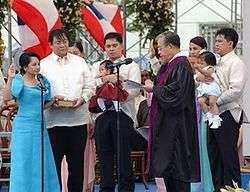
Gloria Macapagal Arroyo, the 14th President of the Philippines.
-

Mountaineer Leo Oracion reached the summit of Mount Everest via the Nepalese side.
-

The site of the explosion in Glorietta.
-
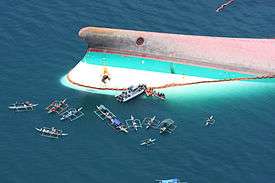
MV Princess of the Stars which had capsized on June 21, 2008 at the height of Typhoon Frank.
-
Corazon Aquino was buried beside her husband Ninoy at the Manila Memorial Park after her death on August 1.
-
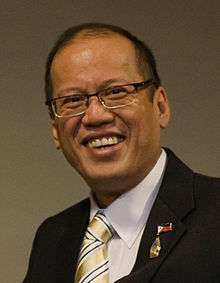
Benigno Aquino III, the 15th President of the Philippines.
-
The bus of 2010 Manila hostage crisis were 8 Hong-Kong tourist were killed.
-
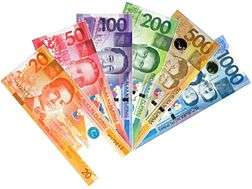
New generation Series of Philippine Peso.
-
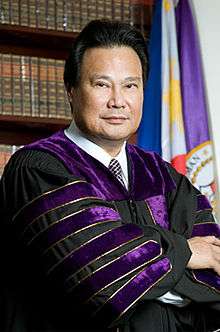
Renato Corona is the first Chief Justice to be impeached by the House of Representatives.
-
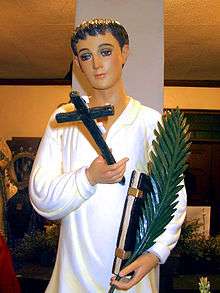
Pedro Calungsod proclaimed as a saint.
-
.jpg)
Megan Young: She won the Miss World Philippines title and was later crowned as Miss World 2013 in Bali, Indonesia.
-
The Zamboanga City Hall where the MNLF intended to hoist the Bangsamoro Republik flag in the height of Zamboanga City crisis.
-
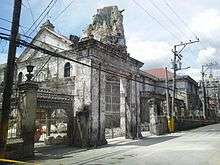
Basilica of the Holy Child in Cebu City, Philippines after 2013 Bohol earthquake.
-

Typhoon Haiyan also known as Yolanda was the strongest typhoon in the Philippines.
-
.jpg)
Pia Wurtzbach: She won the Binibining Pilipinas title and was later crowned as Miss Universe 2015 in Las Vegas, Nevada, USA.
-

Diwata-1 also known as PHL-Microsat-1 is a Philippine microsatellite launched to the International Space Station (ISS) in March 23, 2016 and was deployed into orbit from the ISS in April 27, 2016. It is the first Philippine microsatellite and the first satellite built and designed by Filipinos.
-
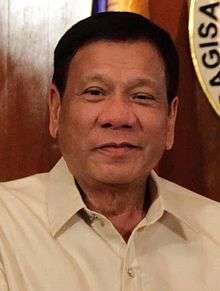
Rodrigo Duterte, the 16th President of the Philippines.
-
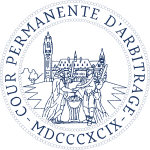
The Permanent Court of Arbitration ruled in favor of the Philippines against China over territorial disputes in the South China Sea.
-
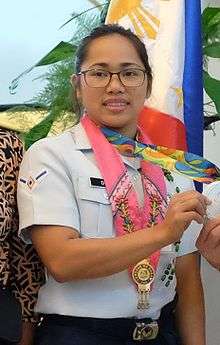
Hidilyn Diaz is a Filipino weightlifter and airwoman. won the silver medal in the women's 53-kg weight division, ending the Philippines' 20-year Olympic medal drought.
-
Lav Diaz, the director of The Woman Who Left who wins the Golden Lion.
-
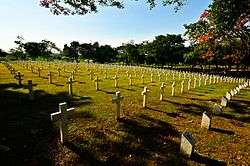
The Heroes' Cemetery where the remains of Ferdinand Marcos is buried on November 18.
See also
References
- 1 2 Scott, William (1984). Prehispanic Source Material. p. 17.
- 1 2 Bellwood, Peter (2011). Pathos of Origin. pp. 31–41.
- 1 2 3 Geographical History Pamantasan ng Lungsod ng Maynila website May 1, 2012
- ↑ Ancient and Pre-Spanis Era of the PhilippinesLive Cebu Accessed September 04, 2008.
- ↑ Philippine Archeologists Unearthed Limestone Coffin Yahoo news Retrieved 09 November 2016
- ↑ Tomb Raiders Spoil Philippine Archeological Find Bankokpost Retrieved 09 November 2016]
- ↑ Adib Majul, Cesar (1999). Muslims in the Philippines. University of the Philippines Press. ISBN 971-542-188-1.
- 1 2 3 4 5 How Did Ferdinand Magellan Discover the Philippines Interesting Facts About The Philippines Retrieved 09 November 2016
- 1 2 3 4 5 6 7 8 9 10 11 12 13 14 15 Spanish Expeditions to the Philippines Philippine History Retrieved 10 November 2016
- ↑ Where was the first Mass in the Philippines held? The Manila Times Retrieved 10 November 2016
- 1 2 3 4 5 Miguel Lopez de Legazpi Encyclopaedia Britannica Retrieved 09 November 2016
- 1 2 3 4 5 6 7 8 9 10 11 12 13 14 15 16 17 18 19 20 21 22 23 24 25 26 27 Central and Eastern Visayas Dagahi and Eugenio S. Daza, msc.edu.ph, retrieved 2008-07-04
- 1 2 3 4 5 6 7 8 9 10 11 12 13 14 15 16 17 18 19 20 21 22 23 24 25 26 27 Señor Enrique, Wish You Were Here, retrieved 2008-07-14
- 1 2 3 4 5 6 7 8 9 10 11 12 13 14 15 16 17 18 19 20 21 22 23 24 25 26 27 Philippine History Group of Los Angeles, Alfonso S. Quilala Jr., retrieved 2008-07-17
- 1 2 3 4 5 6 7 8 9 10 11 12 13 14 15 16 17 18 19 20 21 22 23 24 25 26 27 Electronic Kabalen, J. Reylan Bustos Viray – JOE MARK, retrieved 2008-07-17
- 1 2 3 4 5 6 7 8 9 10 11 12 13 14 15 16 17 18 19 20 21 22 23 24 25 26 27 Bartleby, The Philippines 1500–1800, retrieved 2008-07-04
- 1 2 3 4 5 6 7 8 9 10 11 12 13 14 15 16 17 18 19 20 21 22 23 24 25 26 27 28 29 30 31 32 33 34 35 36 37 38 39 40 41 42 43 44 45 46 47 48 49 50 51 52 53 54 55 56 57 58 59 60 61 62 63 64 65 66 67 68 69 70 71 72 73 74 75 76 77 78 79 80 81 82 83 84 85 86 87 88 89 90 91 92 93 94 95 96 97 98 99 100 101 102 103 104 105 106 107 108 109 110 111 112 113 114 115 116 117 118 119 120 Governors of the Philippines Governors of the Philippines during the Spanish colonial period Retrieved 09 November 2016
- 1 2 3 4 5 History of the Archdiocese of Manila The Roman Catholic Archdiocese of Manila Retrieved 10 November 2016
- 1 2 3 4 5 Dioceses in the Philippines Catholic Heirarchy.org Retrieved 10 November 2016
- 1 2 3 4 5 6 7 8 9 Ang edukasyon sa panahon ng mga Kastila "The Filipino Corner" Retrieved October 27, 2012
- ↑ The First Hundred Years of the Ateneo de Manila Ateneo de Manila University website May 1, 2012
- ↑ Grant to the seminary of Santa Potenciana, 1617. Retrieved May 30, 2012
- ↑ Real Colegio de Santa Potenciana. Retrieved May 30, 2012
- ↑ Perez Dasmarinas, Luis. Letters from Luis Perez Dasmarinas to Filipe II. In The Philippine Islands, 1493–1898. Ohio: A.H. Clark Company, 1903-9. Vol. 9
- ↑ About USC: University of San Carlos University of San Carlos website Retrieved 2012-04-24
- ↑ No contest: UST is oldest university Inquirer.net Retrieved May 30, 2012
- ↑ UST is oldest, period Varsitarian website Retrieved May 30, 2012
- 1 2 3 4 5 6 7 8 9 10 11 12 Lim-Pe, Josefina (1973). The University of Santo Tomas in the Twentieth Century. University of Santo Tomas Press, Manila. pp. 1–19.
- 1 2 3 4 5 6 7 8 9 10 11 12 History of the University of Santo Tomas University of Santo Tomas website Retrieved May 30, 2012
- ↑ History of Colegio de San Juan de Letran Colegio de San Juan de Letran website Retrieved May 30, 2012
- ↑ Colegio de San Juan de Letran jobstreet.com Retrieved May 30, 2012
- ↑ A Knight's Tale – The Lance, June 2005
- ↑ Santa Isabel College Santa Isabel College website Retrieved May 28, 2012
- ↑ Colegio de Santa Isabel Intramuros Wordpress.com Retrieved October 27, 2012
- 1 2 The first university The Philippine Star Retrieved May 28, 2012
- ↑ History of Colegio de San Jose / San Jose Seminary San Jose Seminary website Retrieved May 12, 2012
- ↑ Fr. Miguel A. Bernad, S.J.: "Colegio de San José (1601–2001): A Quick Survey of the Turbulent 400-year History of an Educational Institution" Monk's Hobbit May 1, 2012
- 1 2 3 4 5 6 7 8 9 Manuel Quezon Encyclopaedia Britannica Retrieved 10 November 2016
- 1 2 3 4 5 6 7 8 9 Manuel Luis Quezon Encyclopaedia.com Retrieved 10 November 2016
- 1 2 3 4 5 6 7 8 9 Manuel Quezon Asian History Retrieved 10 November 2016
- 1 2 3 4 5 6 7 8 9 Manuel L. Quezon: A Life Led with Achievement (1988) Academia.edu Retrieved 10 November 2016
- 1 2 3 4 5 6 7 8 9 Filipino Presidents – Biographies Tagalog Lang Retrieved 10 November 2016
- 1 2 3 4 5 Sergio Osmeña Encyclopaedia Britannica Retrieved 10 November 2016
- 1 2 3 4 5 Sergio Osmena Encyclopedia.org Retrieved 10 November 2016
- 1 2 3 4 5 Sergio Osmena Office of the Vice President Retrieved 10 November 2016
- 1 2 3 4 5 6 The Japanese Attack on the Philippines Pacific War.org Retrieved 10 November 2016
- 1 2 3 4 5 6 Douglas MacArthur Encyclopedia Britannica Retrieved 10 November 2016
- 1 2 3 4 5 6 Douglas MacArthur Encyclopaedia of World Biography Retrieved 10 November 2016
- 1 2 3 4 5 6 A Brief Biography of Douglas MacArthur John Curtin.edu Retrieved 10 November 2016
- 1 2 3 4 5 6 Douglas MacArthur, 1880-1964: A Most Successful and Unusual Military Leader Manythings.org Retrieved 10 November 2016
- 1 2 3 4 5 6 Jose P Laurel Encyclopaedia Britannica Retrieved 10 November 2016
- 1 2 3 4 5 6 President Jose P Laurel History Jose P Laurel Foundation Retrieved 10 November 2016
- 1 2 3 4 5 6 Jose P. Laurel: A "Hero" or a "Traitor"? Our Happy School Retrieved 10 November 2016
- 1 2 3 "100 significant events in Philippine history". Retrieved February 6, 2016.
- 1 2 "9 Extremely Notorious Pinoy Gangsters". Retrieved February 6, 2016.
- ↑ "10 Haunting Last Pictures Taken in Philippine History". Retrieved February 6, 2016.
- 1 2 "10 Lesser-Known Photos from Martial Law Years That Will Blow You Away". Retrieved February 6, 2016.
- ↑ Presidential Decree No. 1616 Official Gazette of the Republic of the Philippines Retrieved 09 Nov 2016
Further reading
- Benjamin Vincent (1910), "Philippine Isles", Haydn's Dictionary of Dates (25th ed.), London: Ward, Lock & Co. – via Hathi Trust
- David Lea and Colette Milward, ed. (2001). "Philippines". Political Chronology of South East Asia and Oceania. Political Chronologies of the World. Europa Publications. pp. 157–175. ISBN 978-1-135-35659-0.
- Artemio R. Guillermo (2012). "Chronology". Historical Dictionary of the Philippines. Maryland, USA: Scarecrow Press. ISBN 978-0-8108-7246-2.
External links
- BBC News. "Philippines Profile: Timeline".
- Detailed timeline
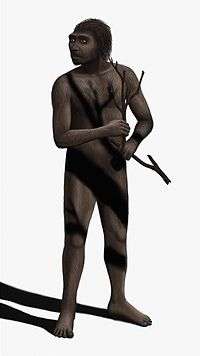


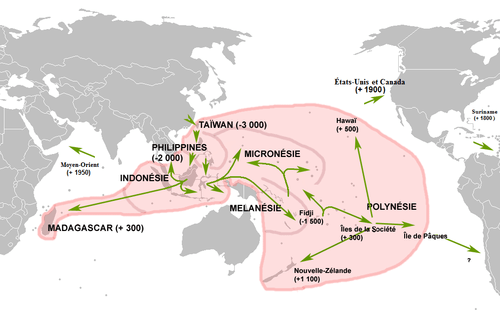
.jpg)
